Many bakers send me private photos of their loaves attached with rude, judge-y remarks.
“Pancakes.”
“F$%#-ing catastrophe.”
“Dismal deflation.”
“Friggin’ flat tire.”
These are just a few of the adjectives frustrated bakers announce when a loaf doesn’t bounce up to the height they had seen in their dreams or worse still, Instagram.
I try to console with “That happens to me all the time…” but that never really helps soften a defeated sourdough baker’s fall from grace.
Let’s face it. Not everyone has the patience or stamina for sourdough baking, especially if you have done some or all of the following:
- Mixed the levain late one night.
- Spent the following day sloshing together a long list of ingredients in a bowl, each scoop of flour, splash of water and sprinkle of salt meticulously measured by the gram or ounce.
- Tugged and stretched and folded every 30 minutes for an entire afternoon or morning before shaping an unbelievably sticky blob into a boule or baton.
- Transferred your shaped loaves into a flour-lined banneton (upside-down, no less) searched for a shower cap or plastic wrap amid a drawer packed tornado-style with measuring cups, spoons and bench scrapers, your fingers sticky with a floury adhesive plastered on everything you touched including the handle of the fridge where the loaves will retire — yet rise — overnight until early the next morning, grumpy and tired, you remove said sourdough loaves ever so gingerly, turn their upside-down forms upright on a parchment paper-covered sheet, score each with a sharp razor blade tremulously pinched between bent, arthritic fingers, don elbow-high, warrior-thick oven mitts, reach into a 500 F degree oven without pulling another muscle, place a hot Lodge combo cooker on the range top, remove its cover, slide a scored loaf into it, replace the lid, emit a bovine-like moan while lifting the five-ton, molten hot-lidded combo cooker, bend back down again into the hellish heat to settle one pan and remove the next until both loaves are now blessedly in their baking place, covered until the timer dings in 20 minutes to uncover what could be the most blissful or depressing sight you’ve seen in the past 48 hours of your baking life.
Who cares if you’ve created a splattered 2-inch pool of dough, and not the eight-inch-high bursting boule of your dreams?
You do, if you have read this far. Several decades of baking have taught me several lessons or simple rules.
Rule one for success. To be a sourdough baker you must be obsessed if not on the verge of masochistic.
Rule two. When the lid comes off and the dough has spread like a pool of blood, tell your ego to shut-up and wonder why. (If George hadn’t been curious, he wouldn’t have lived through all those books). Was my starter fresh, strong and resilient enough? Did I shape the boule to have sufficient tension? Am I scoring art or slashing their hearts? Is my flour organic, local and freshly milled? Am I using chlorinated water or sweet spring H2O?
Rule three. Know your dough like the back of your hand, the nose on your face, your third eye, whatever. When you fail, try the very same bread recipe again, yes, again, without complaining or holding your breath. Just observe. Do that three-day process all over again making it a meditation on sticky versus wet, pliable versus loose. Wonder how far you can gently stretch the dough without tearing. Do you want to maintain those bubbles or press them out? What is the ambient temperature of your kitchen? Have you tried putting a thermometer in your flour, dough or water?
Last rule: Post every winner on Instagram and quietly embrace your losers. Listen to your palate because sourdough ugly ducklings offer up rich, artisanal flavours you’ll never taste in store-bought.
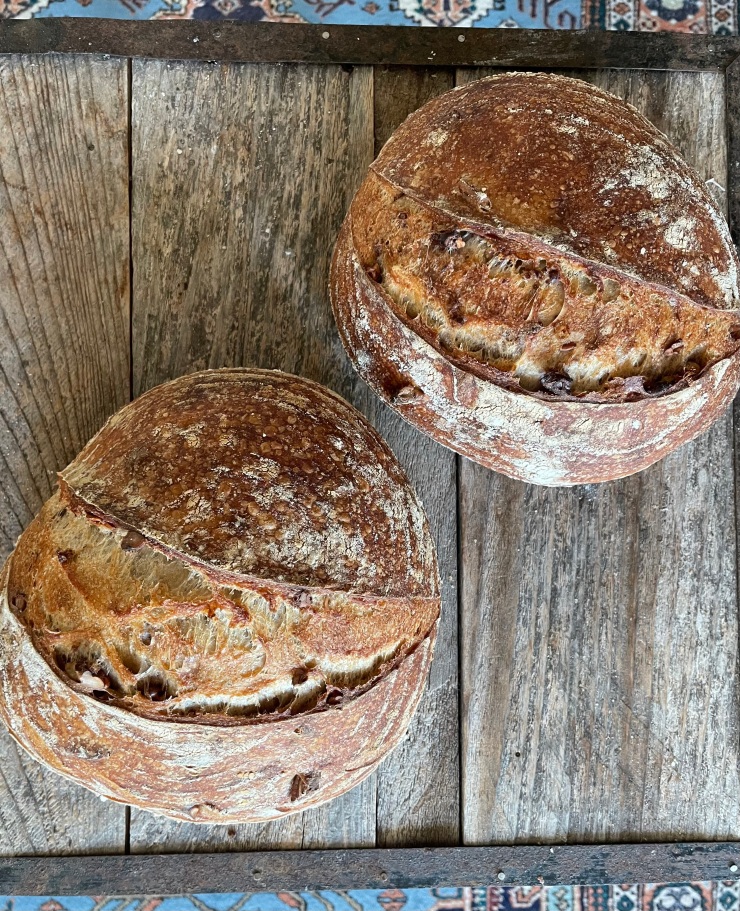
Apple Pecan Sourdough
Makes 2 loaves
This bread is adapted from Sarah Owen’s brilliant Butternut Squash and Cherry Bread found in Sourdough. Freshly ground flour ramps up the taste factor 100 per cent.
Stiff levain
30 g 100% hydration starter
60 g water
85 g organic, unbleached hard white bread flour
Final dough
175 g stiff levain
250 g thick, preferably homemade apple sauce
355 g water
45 g honey
525 g organic, unbleached hard white bread flour
140 g whole spelt flour
30 g whole rye flour
14 g sea salt (Guérande, a gray, coarse salt from Brittany is my favourite for bread)
1 cup toasted pecan pieces
Make the levain in a medium bowl, mix with your hand and knead into a small ball. Cover with plastic wrap and leave to ferment at room temperature for 8 to 10 hours or when it is tightly domed. (You can refrigerate after 7 hrs and keep there for up to 6 hrs if your schedule requires).
In a large bin or bowl, combine stiff levain, apple sauce, water and honey. Using your hand, break up and squeeze the levain until it breaks down into a bubbly, cloudy mix. Add flour, spelt and flour, mixing with your hands, a Danish dough whisk or large spoon. Cover and leave to autolyze for about 20 minutes. Sprinkle over with salt and mix it into the dough, squeezing and grabbing the dough, with a moist hand until a dough forms with no dry flour bits. Cover and bulk ferment for 2 hours, turning and folding every 30-40 minutes. Fold in toasted pecans and continue to ferment another 1-2 hours, or until the dough is puffy and almost doubled in size, knowing that hot summer temperatures raise dough faster.
Sprinkle brown rice flour inside lined bowls or bannetons to prevent sticking. On a lightly floured surface, halve the dough into two pieces, shape and place seam-side up, covering with shower caps or closed plastic bags. Refrigerate 8-12 hours.
Preheat two Lodge combo cooker pans in the bottom rack of a 500 F oven. Depending on your oven this will take 30-60 min.
Remove raised loaves from the refrigerator, uncover and place a piece of parchment paper and small cutting board over each one. Flip each one over to release the dough and score. Wearing heavy duty oven gloves, remove one heated combo cooker. Remove the cover. Slide the scored loaf into the shallow bottom pan, replace cover and return to the oven. Repeat. Reduce the oven to 450 F and set timer for 20 minutes. Carefully remove covers and leave to bake another 15-25 min, until loaves are golden brown. Cool on baking rack for an hour before serving.
Tip
Making your own applesauce is easy to do. Core and quarter 4 large organic apples, place in a medium saucepan, add 1/2 cup water, cover and heat on medium. Cook, stirring occasionally for about 5 minutes or until the apples are soft enough to mash into a puree.
Tip
Toasting nuts and seeds brings out rich flavour but it’s easy to burn them, instead. Try toasting in a dry frying pan over medium-high heat, stirring and watching until golden brown. It helps to have raw ones nearby to compare colouring. If smoke appears, take off heat immediately.
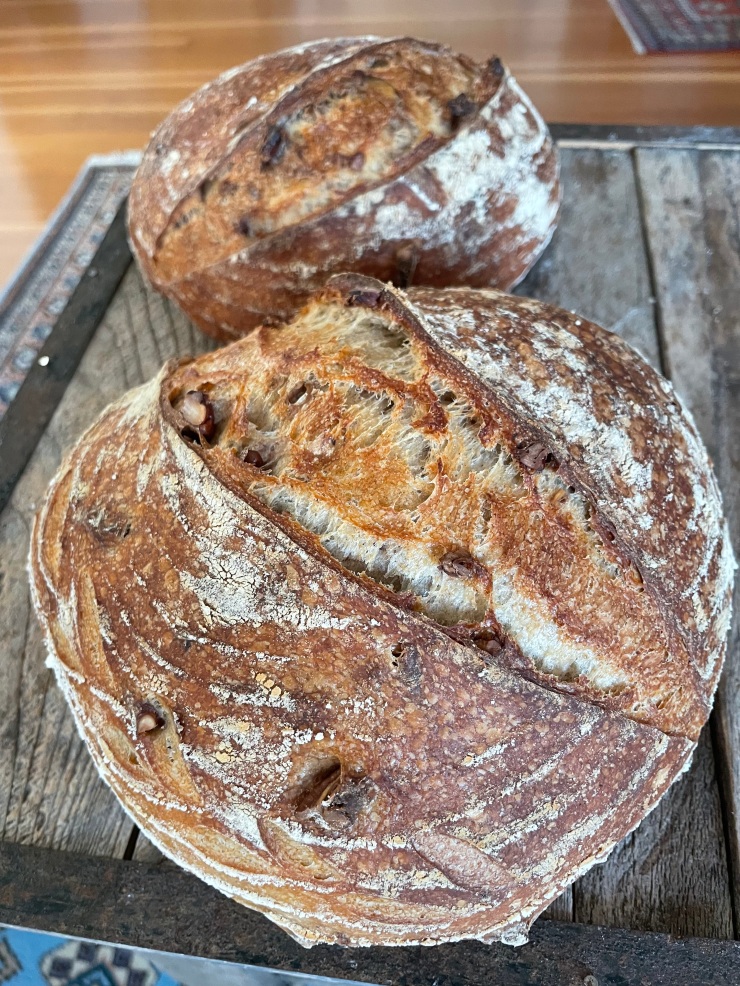


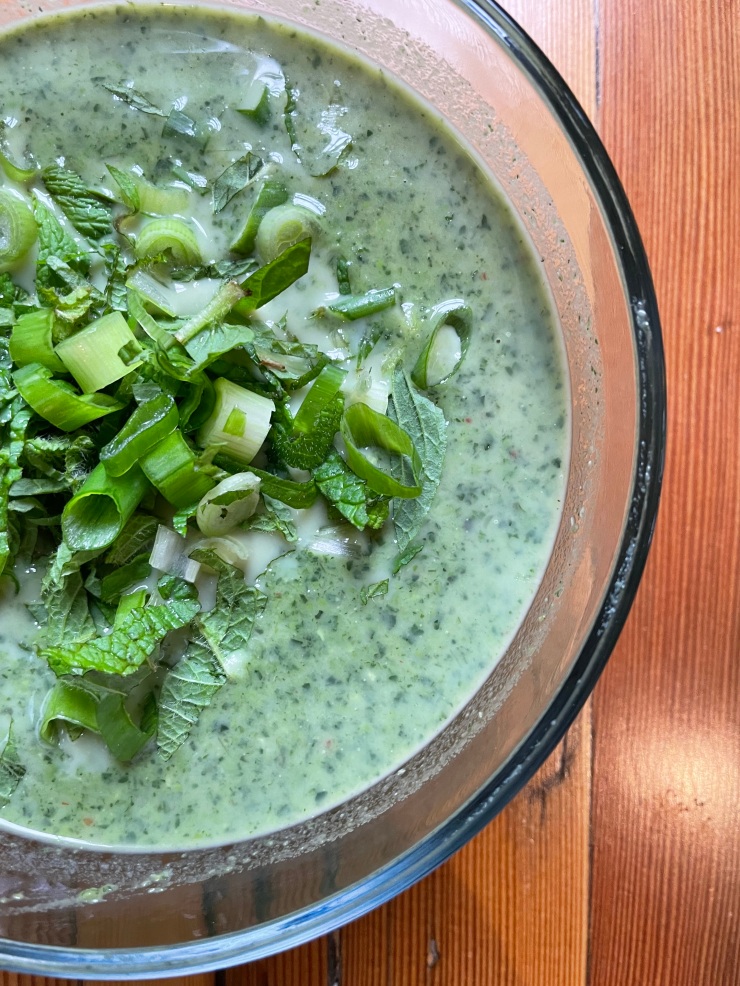

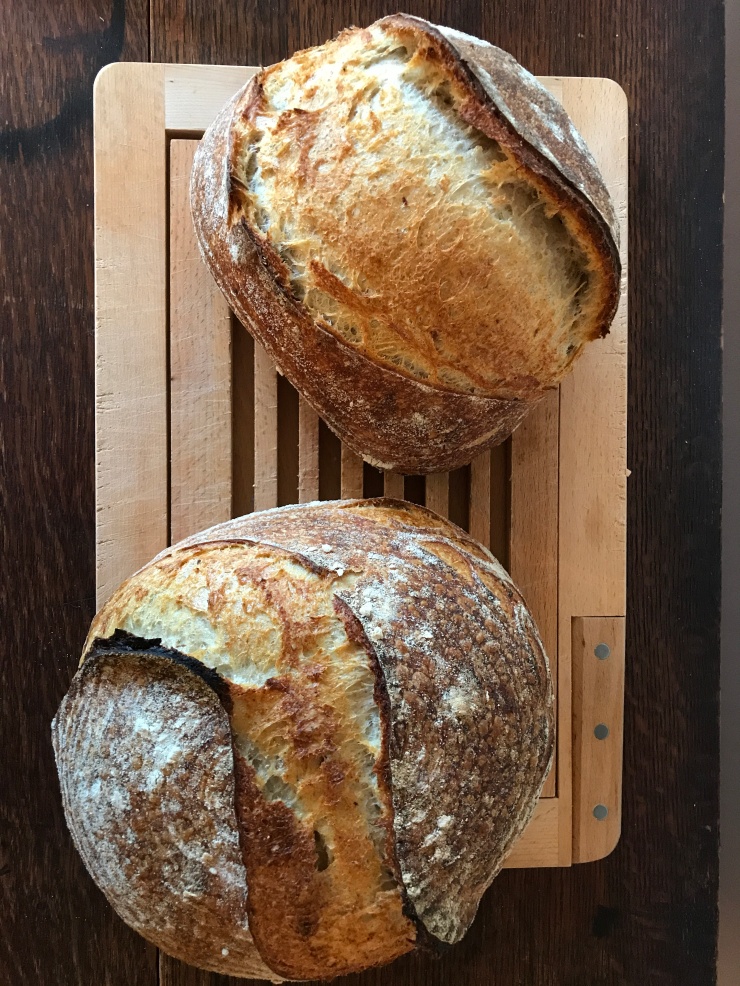
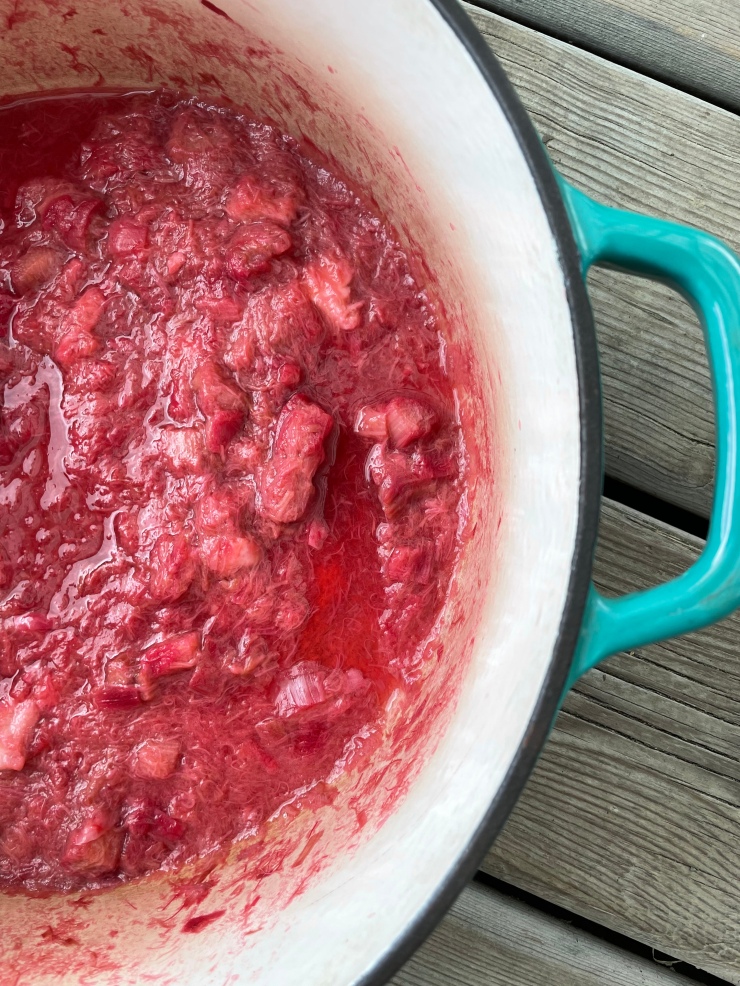
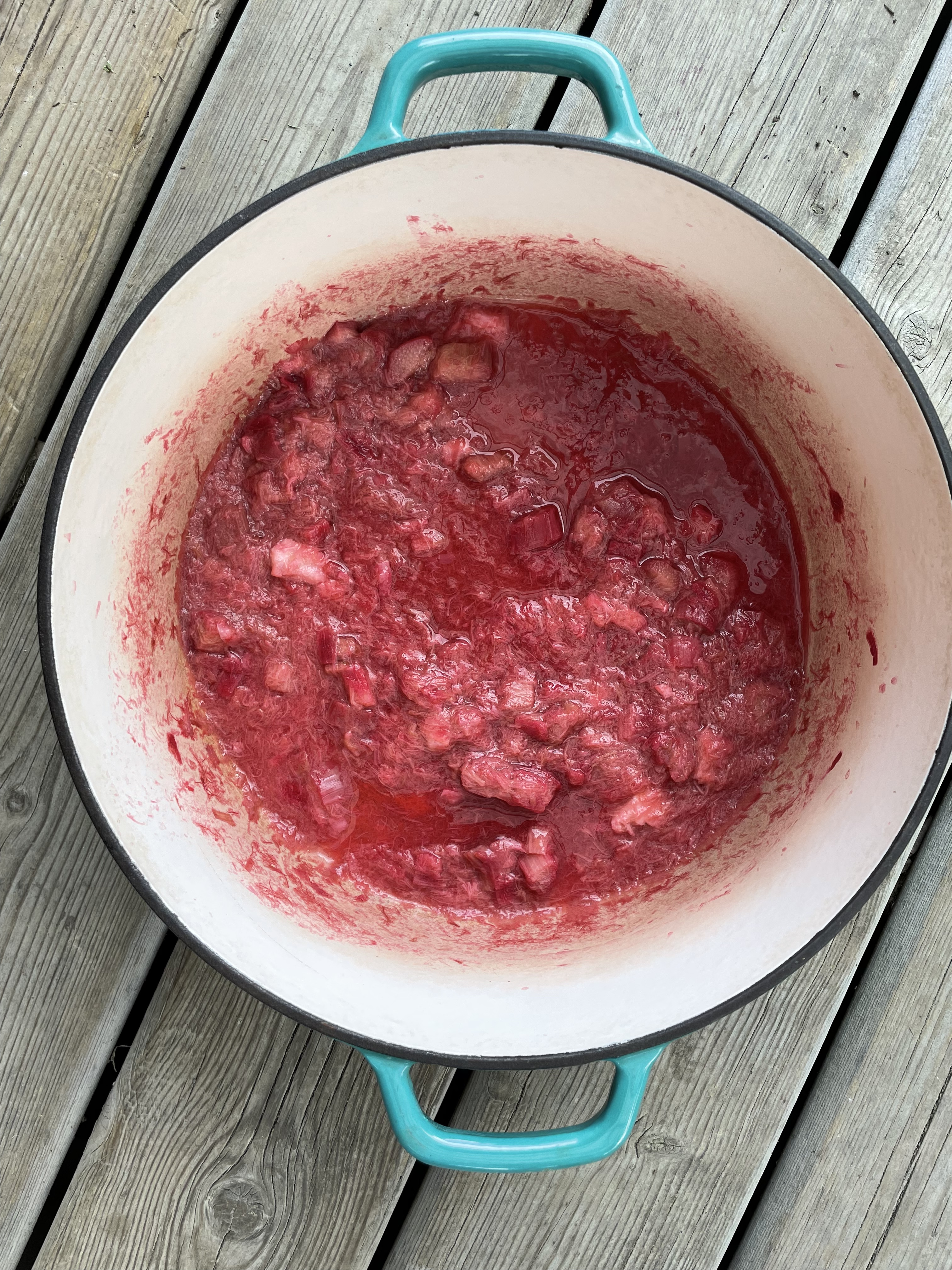


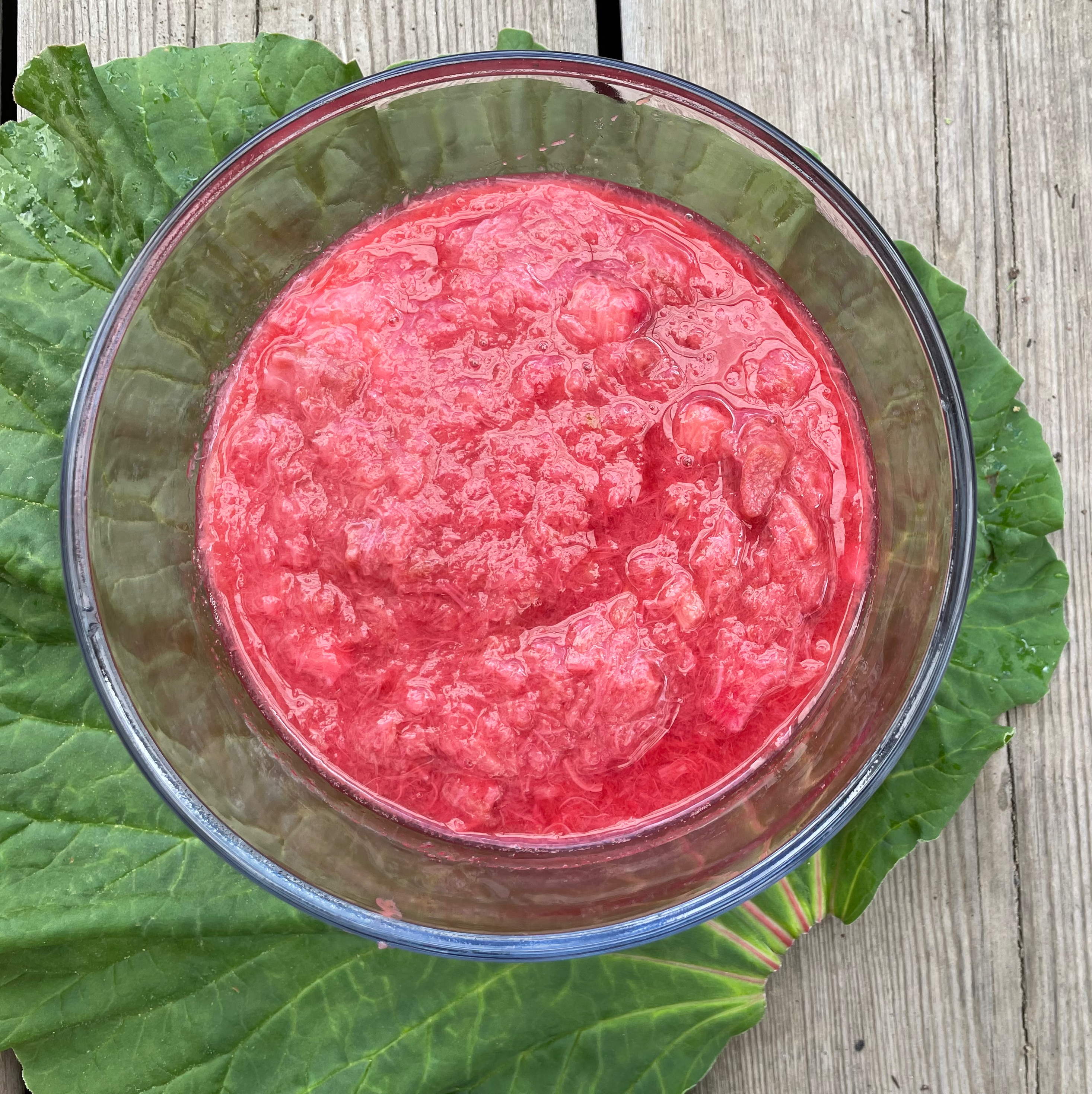

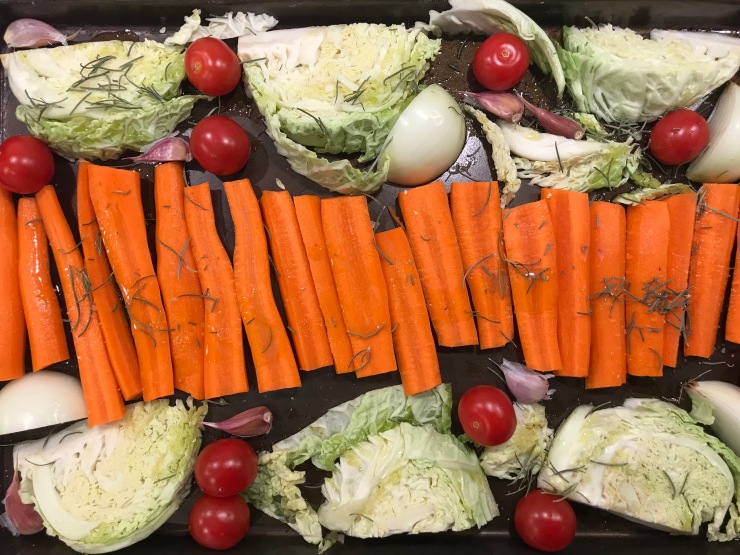


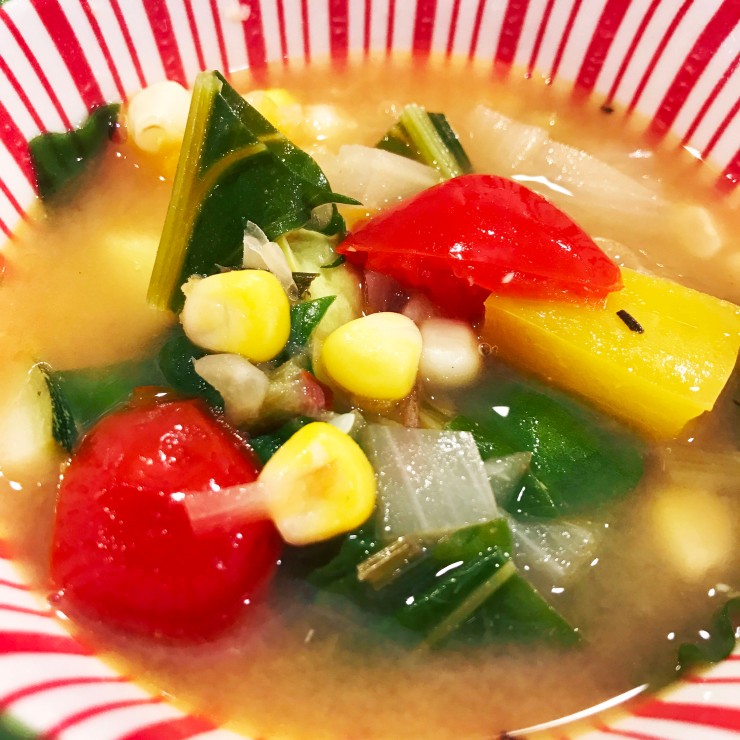




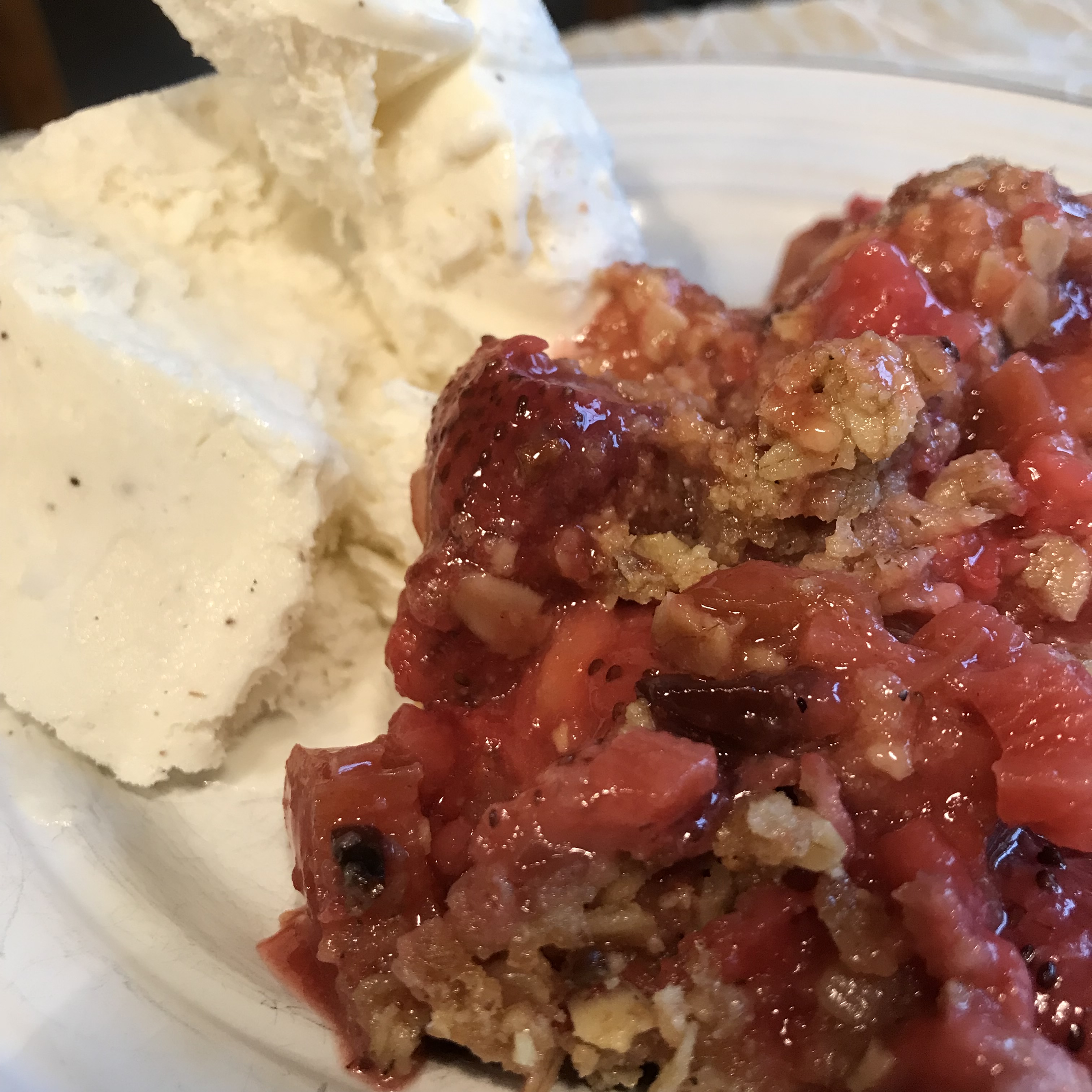

 Once home, I carry my two bulging forest bags into the kitchen. I climb a step stool and reach for the tallest pasta pot I can safely lift down without breaking my neck. Once boiling and salted, the water is ready for my nettles to take the plunge.
Once home, I carry my two bulging forest bags into the kitchen. I climb a step stool and reach for the tallest pasta pot I can safely lift down without breaking my neck. Once boiling and salted, the water is ready for my nettles to take the plunge. “I’ve been doing this since I was five, but I still yelp when they nip me.”
“I’ve been doing this since I was five, but I still yelp when they nip me.”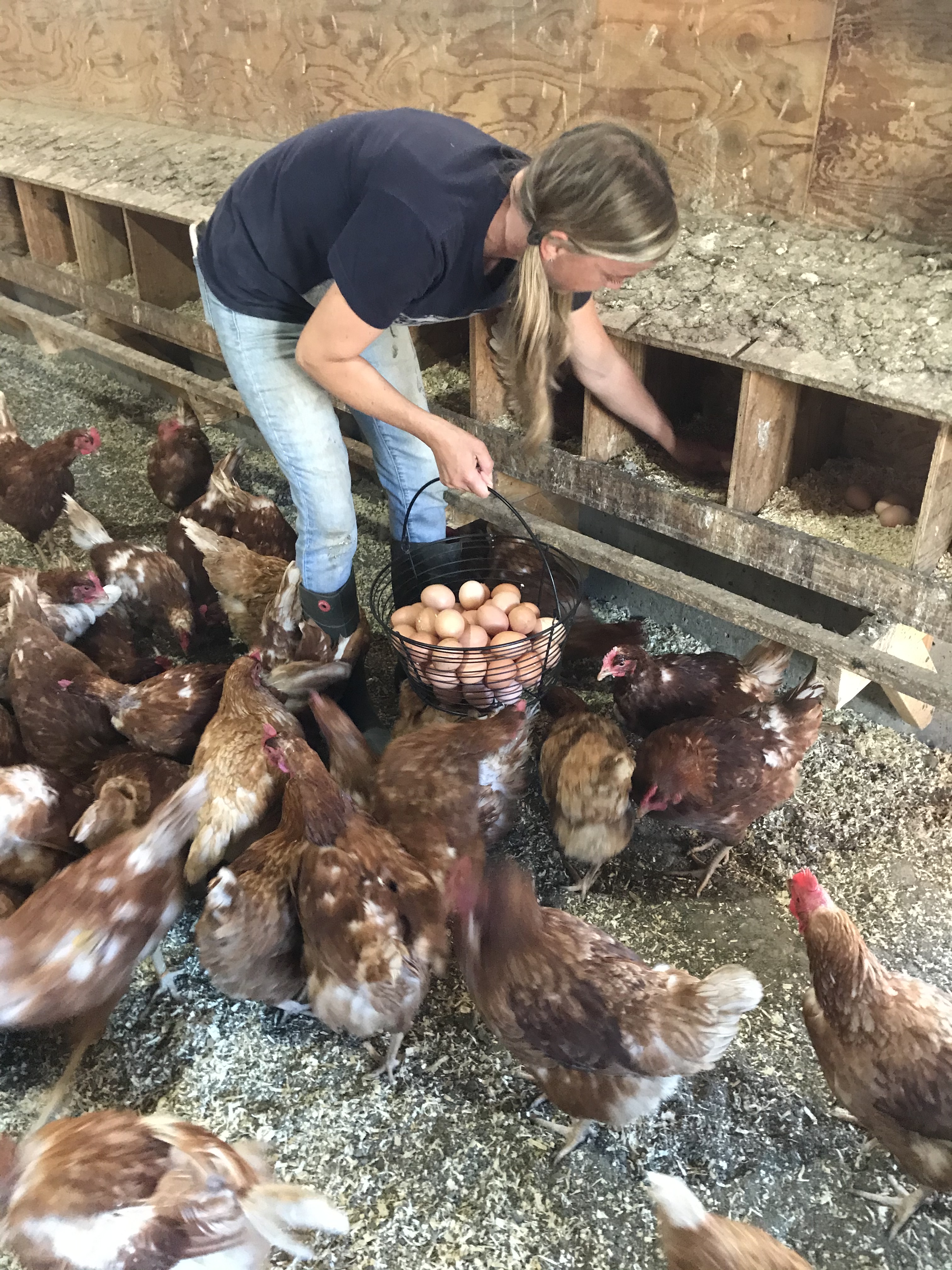 I chickened-out and made a tentative reach into an unoccupied box to find five or six abandoned eggs.
I chickened-out and made a tentative reach into an unoccupied box to find five or six abandoned eggs.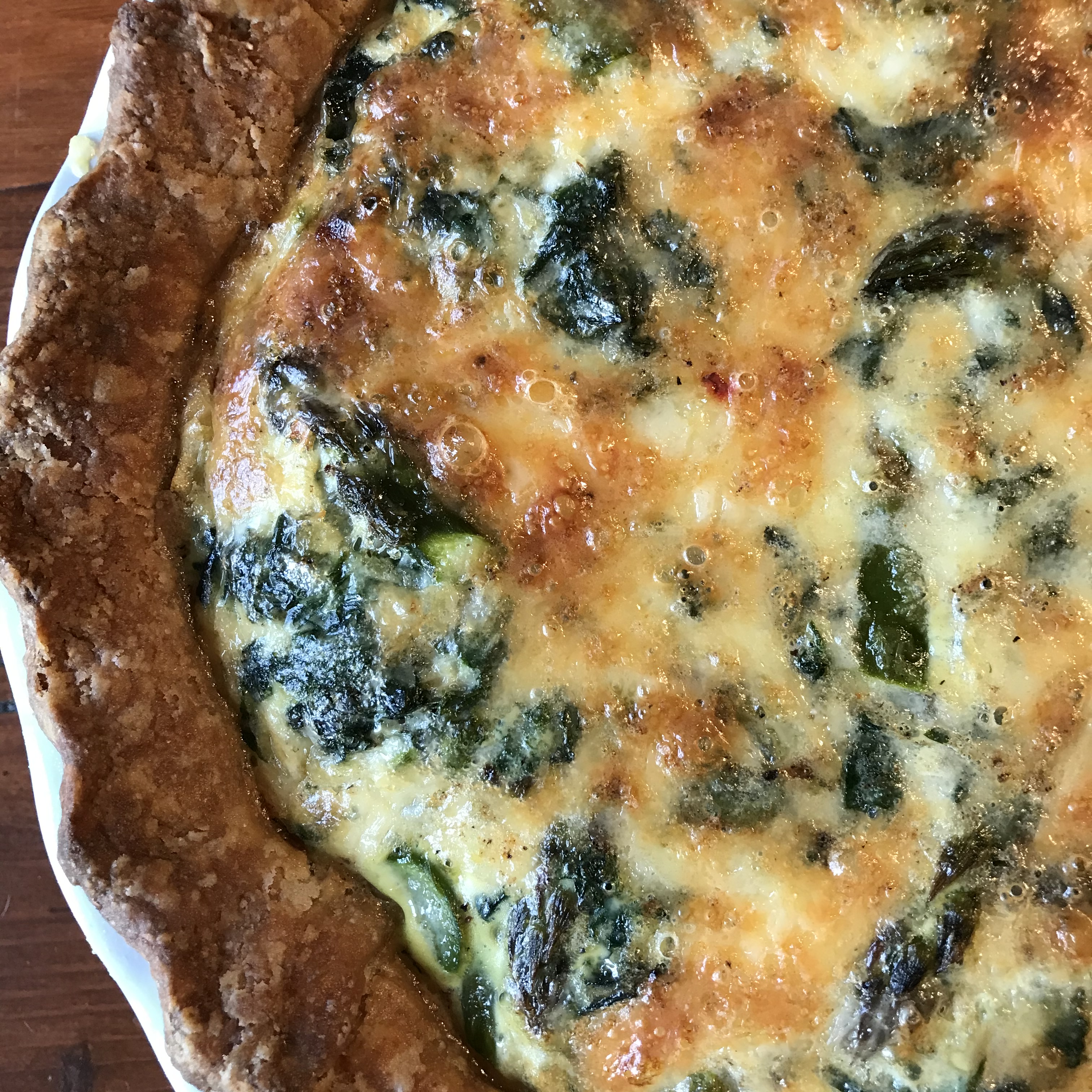



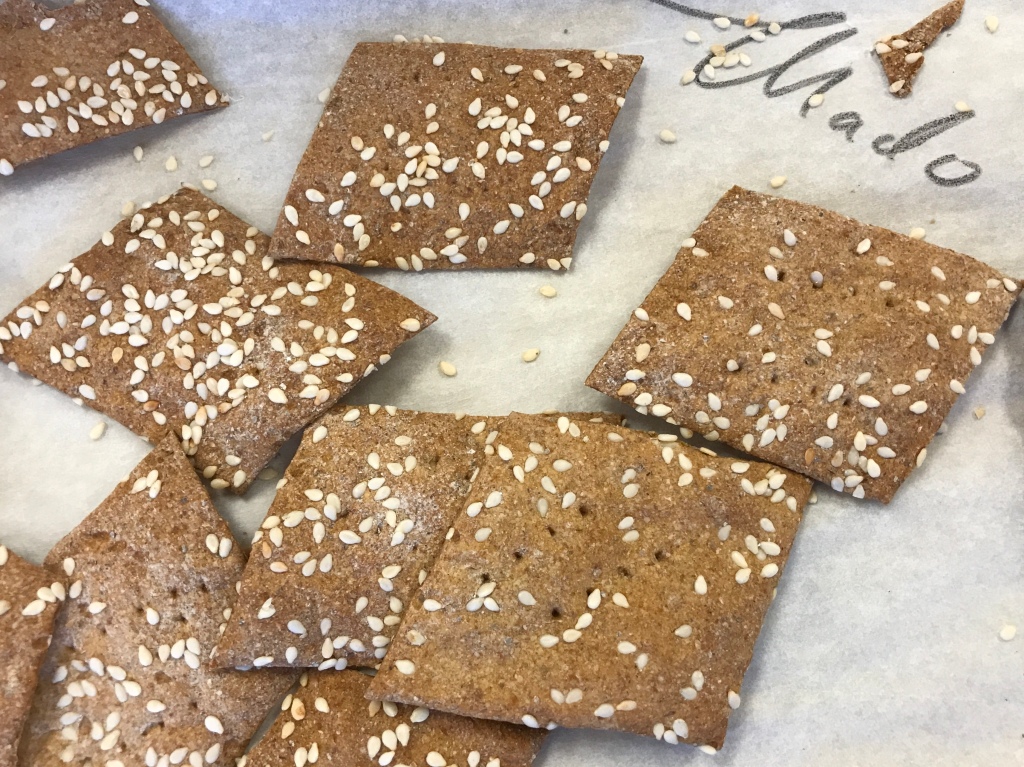



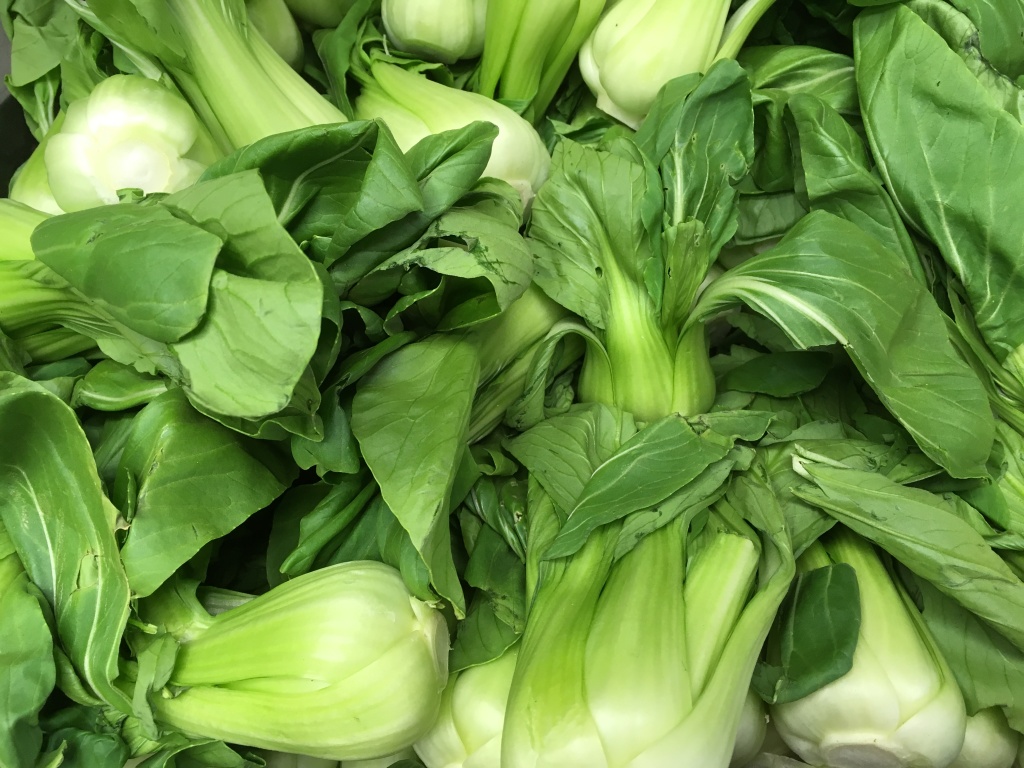




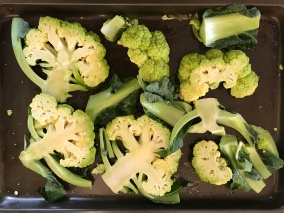













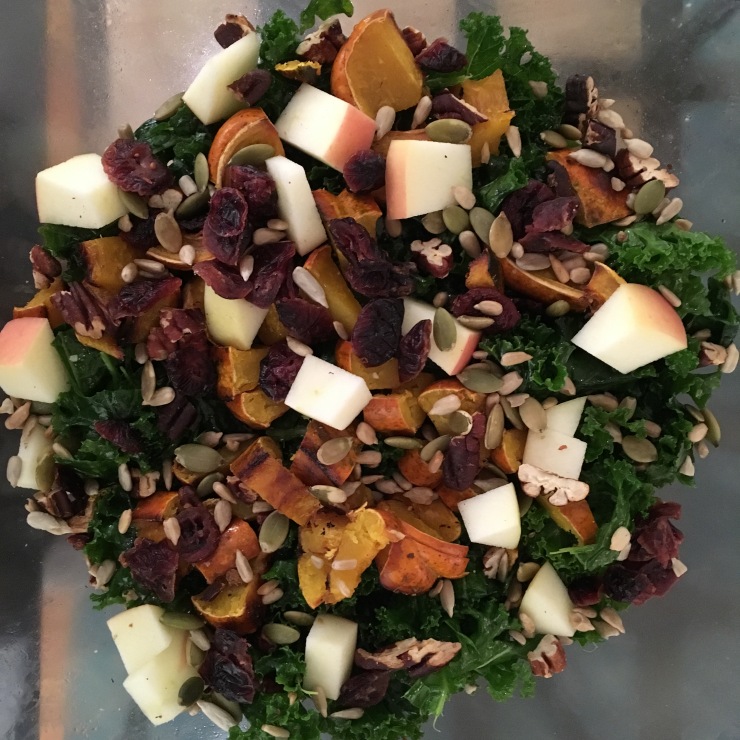






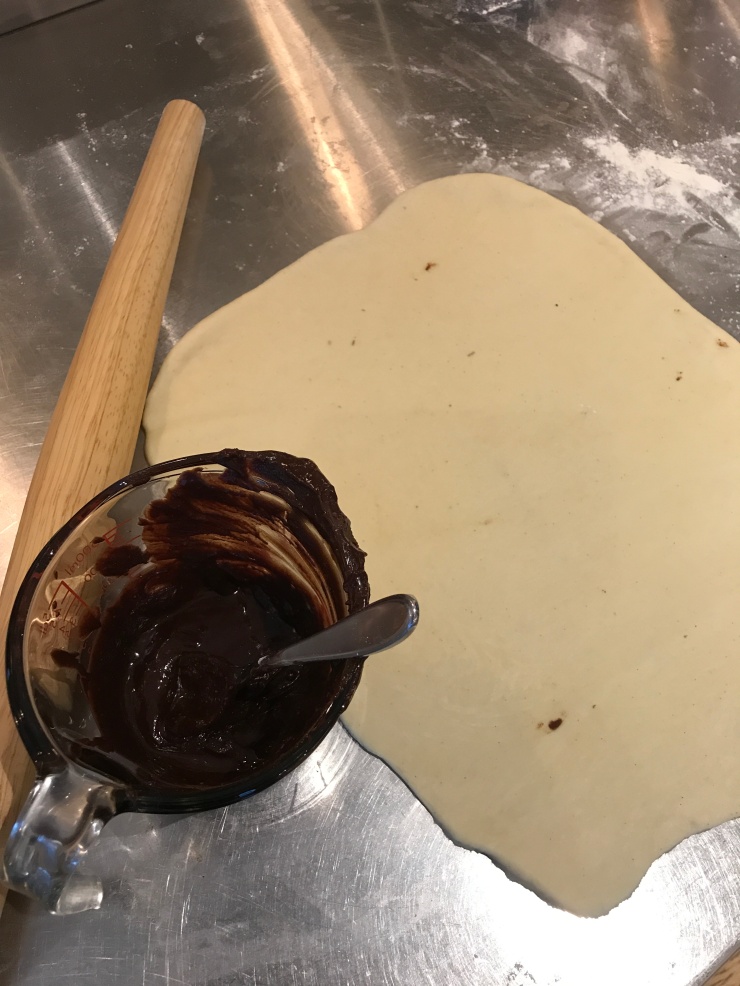

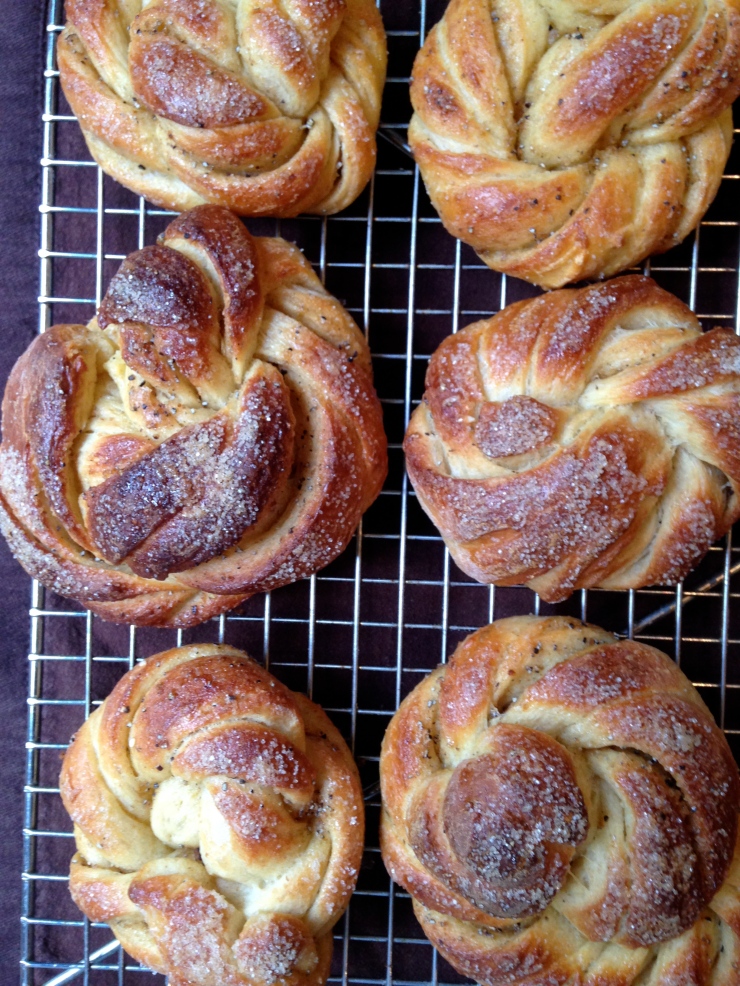















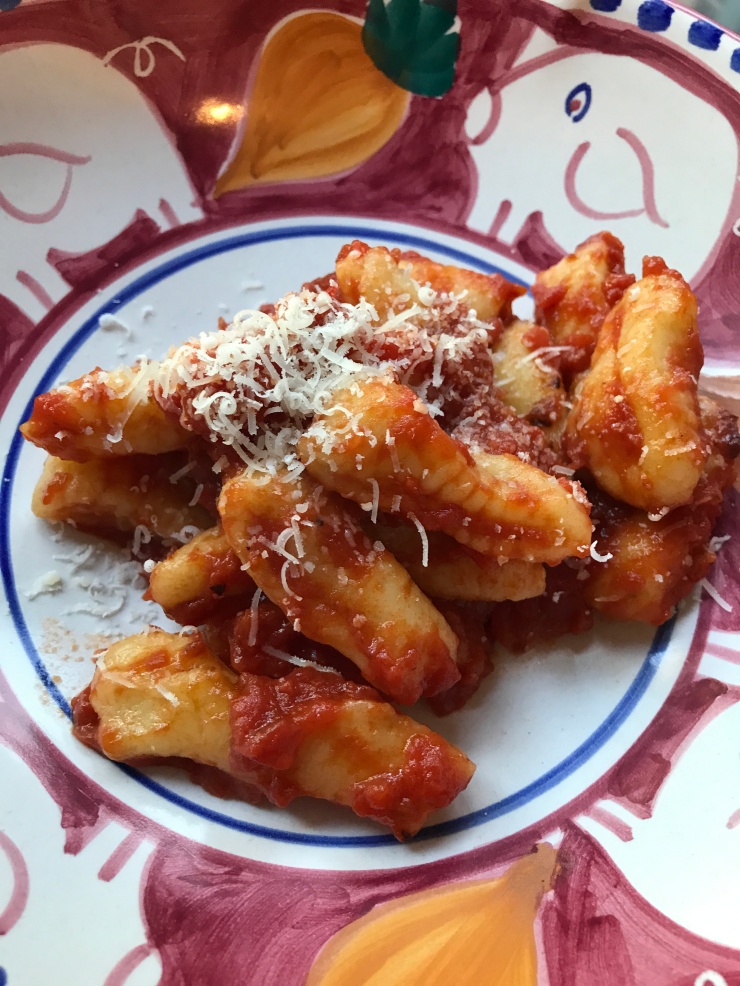

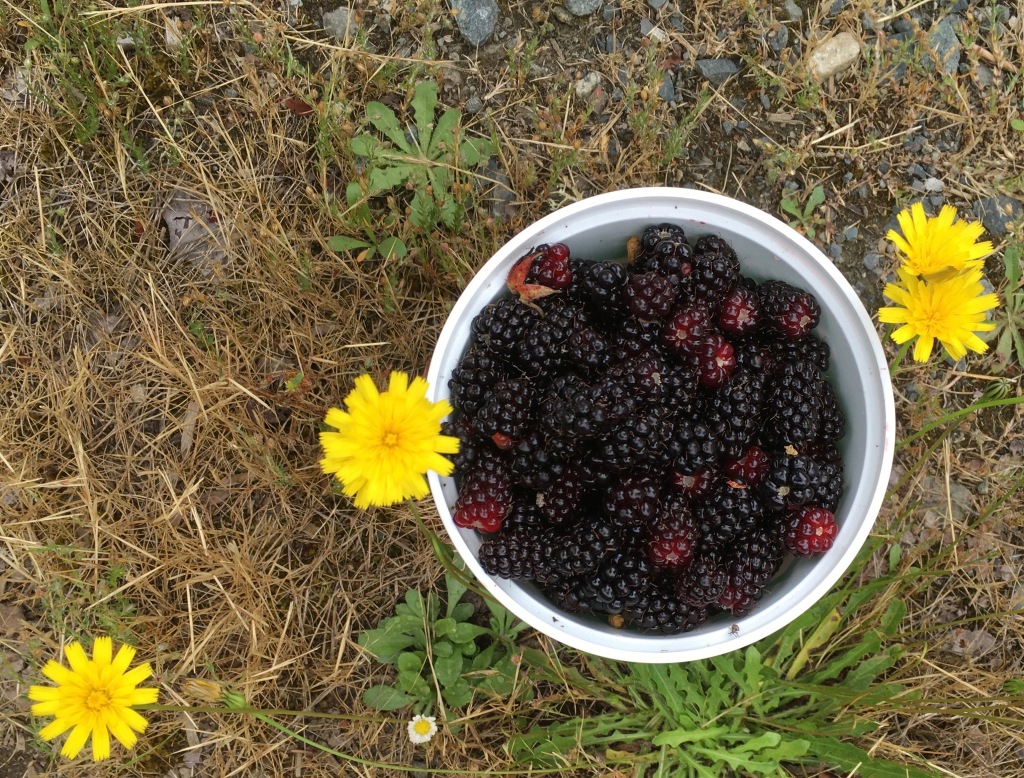






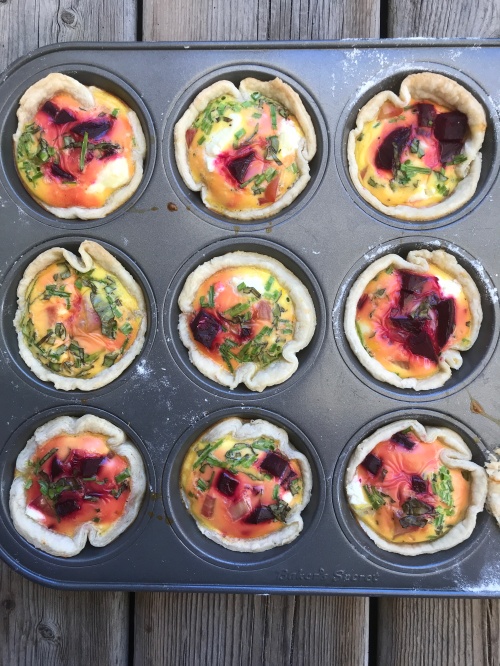

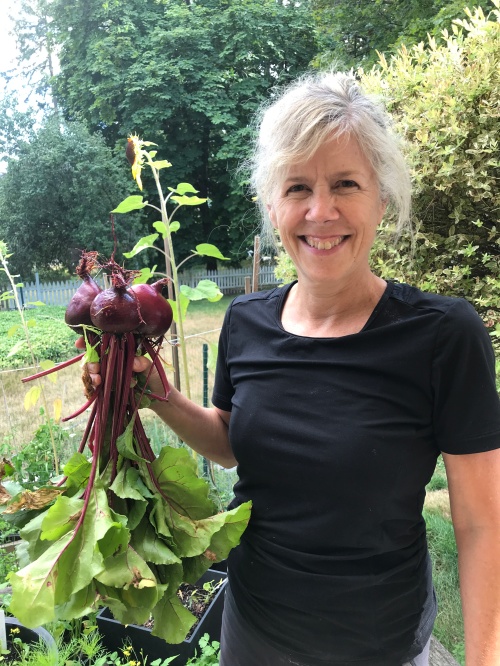



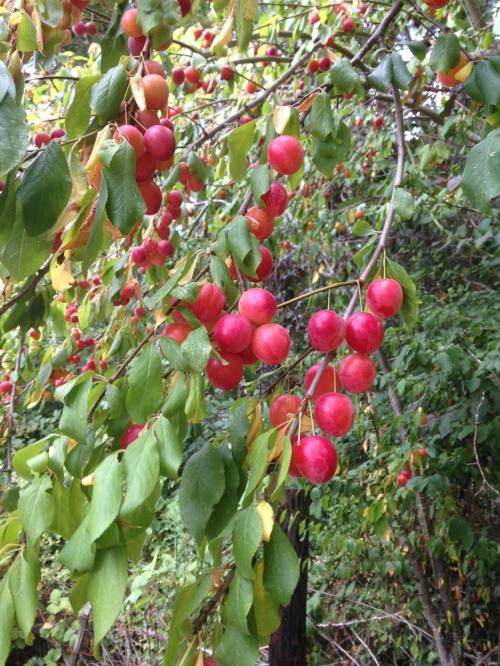






 Next, crack an egg into the mix and lightly oil a measuring cup to ensure easy lift-off for the half cup of molasses needed.
Next, crack an egg into the mix and lightly oil a measuring cup to ensure easy lift-off for the half cup of molasses needed.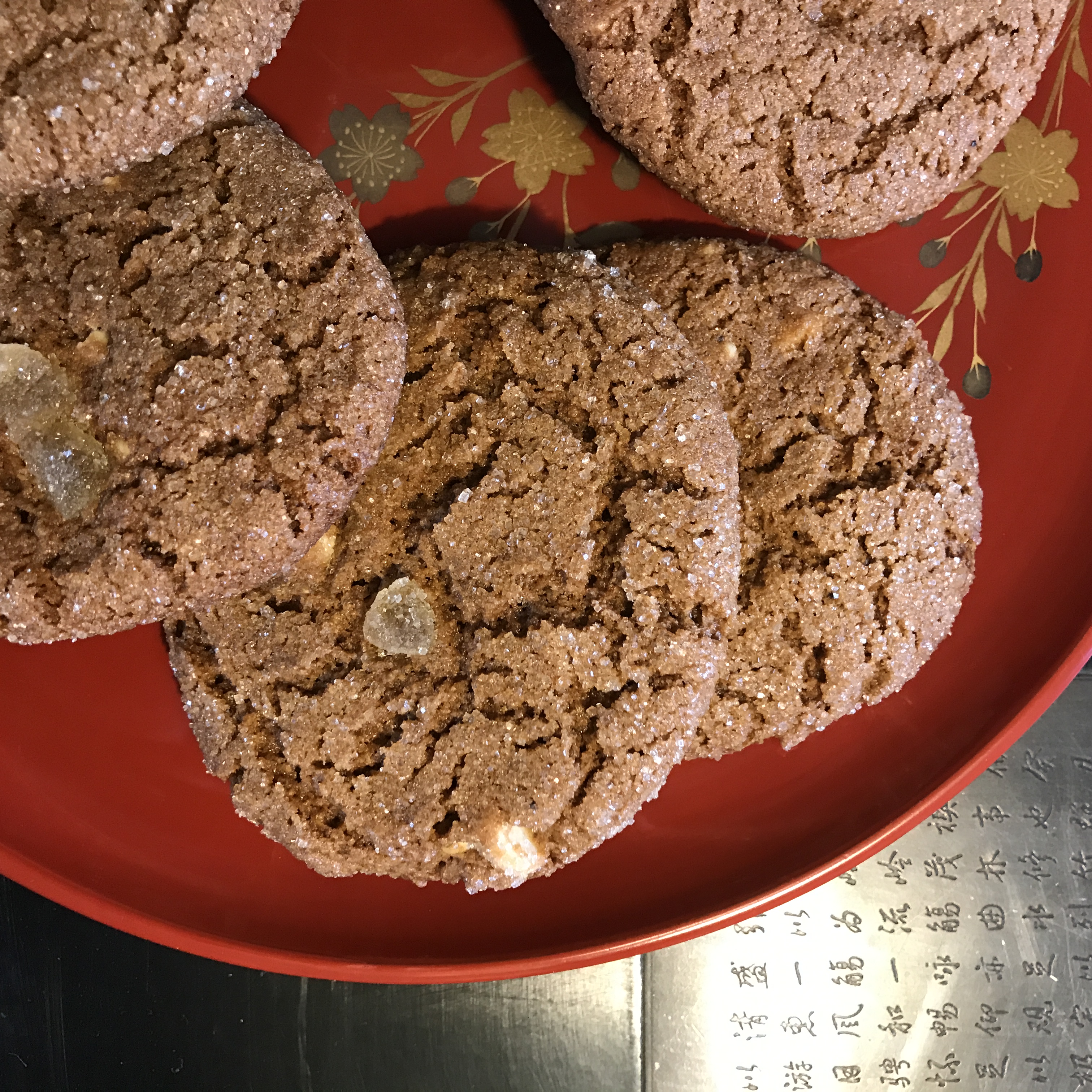
 Place a chopped piece of candied ginger on each sugared ball. Using the bottom of a glass, flatten into 3 inch rounds.
Place a chopped piece of candied ginger on each sugared ball. Using the bottom of a glass, flatten into 3 inch rounds.
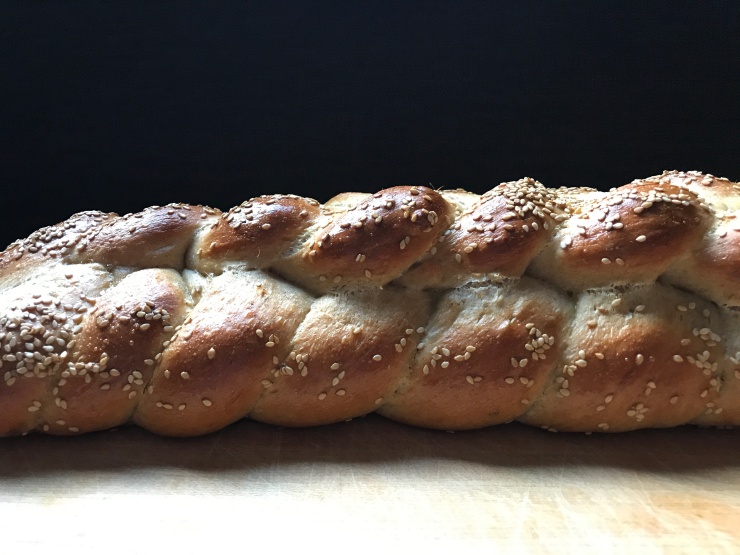

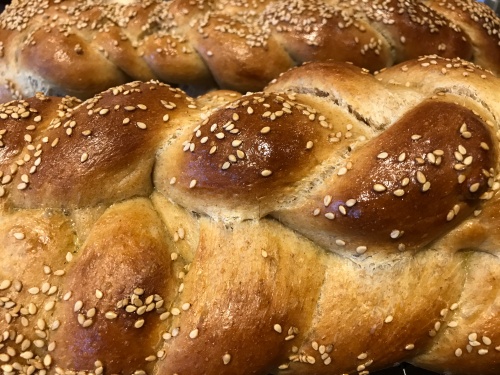
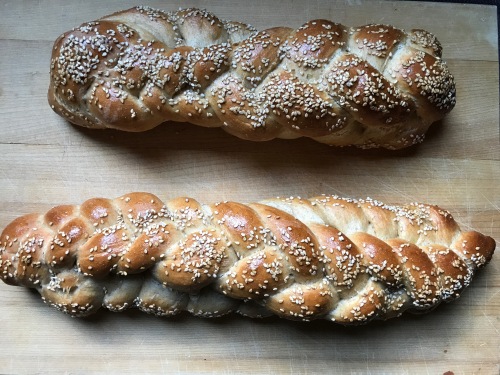

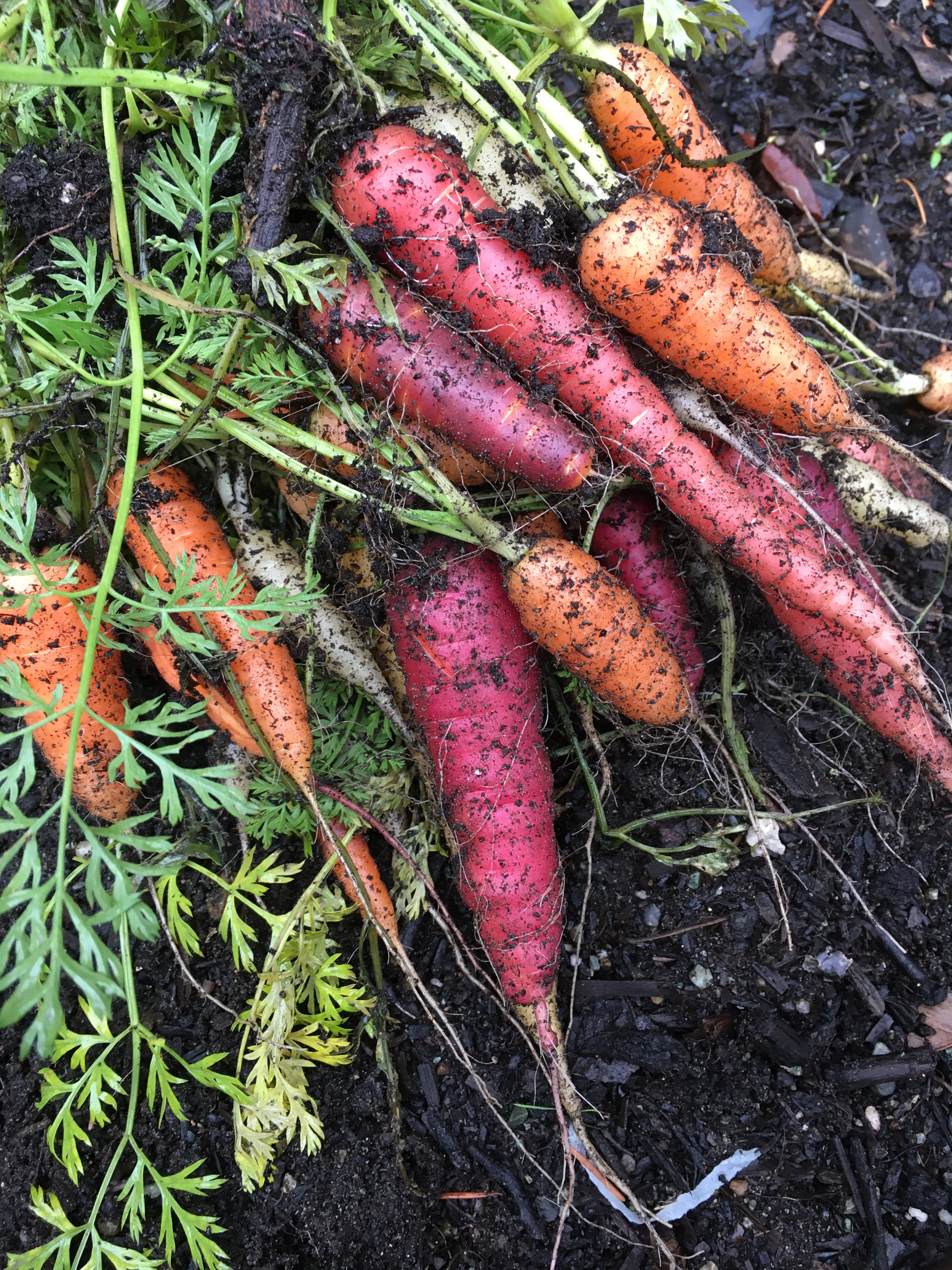 But that hasn’t stopped my love affair with this root.
But that hasn’t stopped my love affair with this root.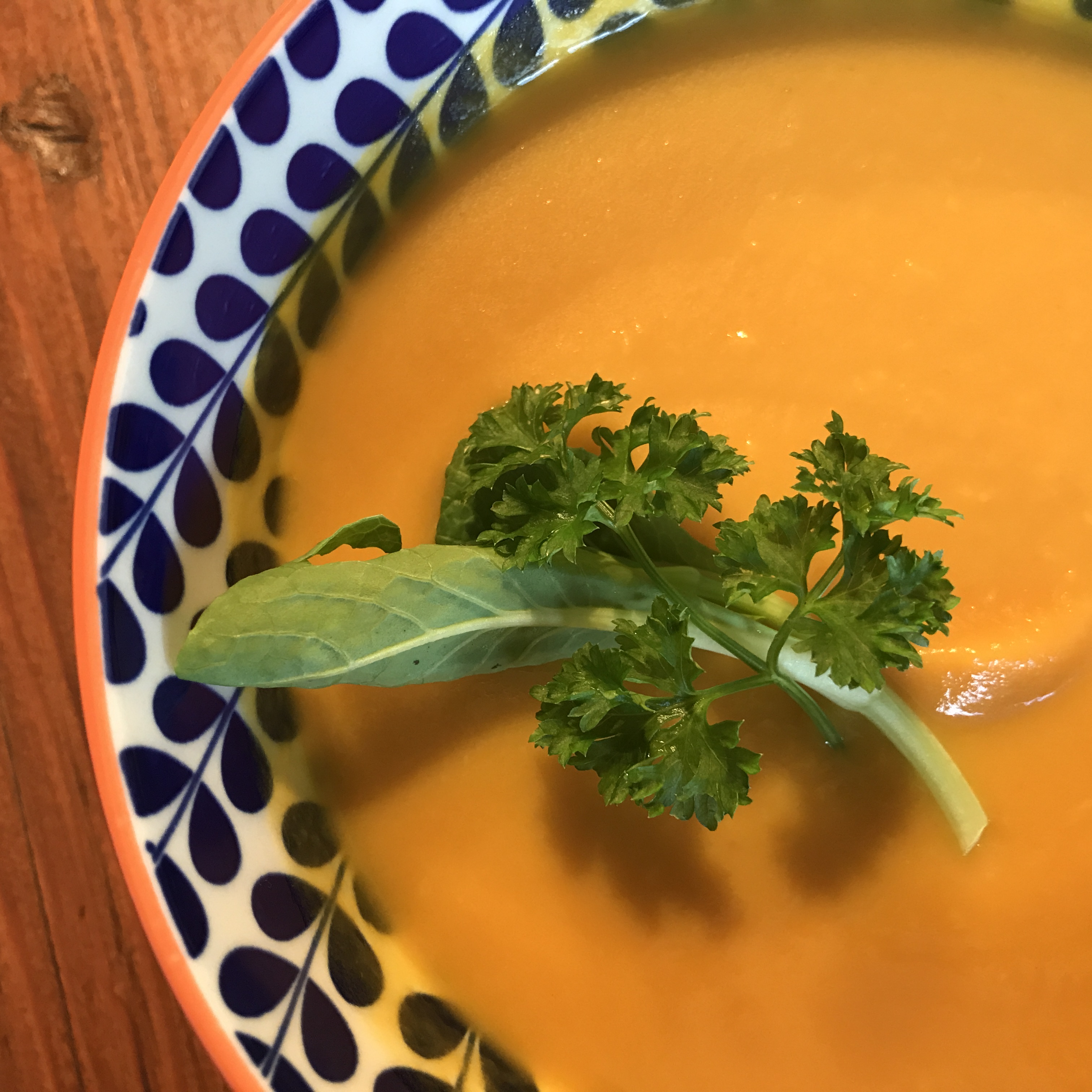 Carrot soup is not that far a leap from baby food.
Carrot soup is not that far a leap from baby food.






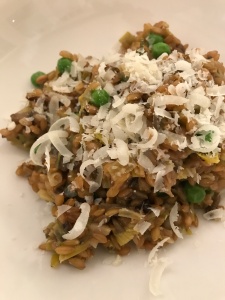


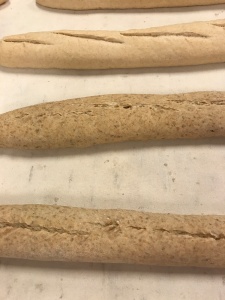













 David, my apple farming husband, is still incredulous three years later as he lugs 15 boxes full of apples into the back of the SUV. It’s our third annual harvest and the first to go to McBarley’s juice and fermentation facility in Duncan. It’s not even the fall and we have harvested and boxed all of Number Two and Three trees. (These round, red and green apples the size of a fist resemble McIntosh apples – but doesn’t every Ontarian call apples that?)
David, my apple farming husband, is still incredulous three years later as he lugs 15 boxes full of apples into the back of the SUV. It’s our third annual harvest and the first to go to McBarley’s juice and fermentation facility in Duncan. It’s not even the fall and we have harvested and boxed all of Number Two and Three trees. (These round, red and green apples the size of a fist resemble McIntosh apples – but doesn’t every Ontarian call apples that?) 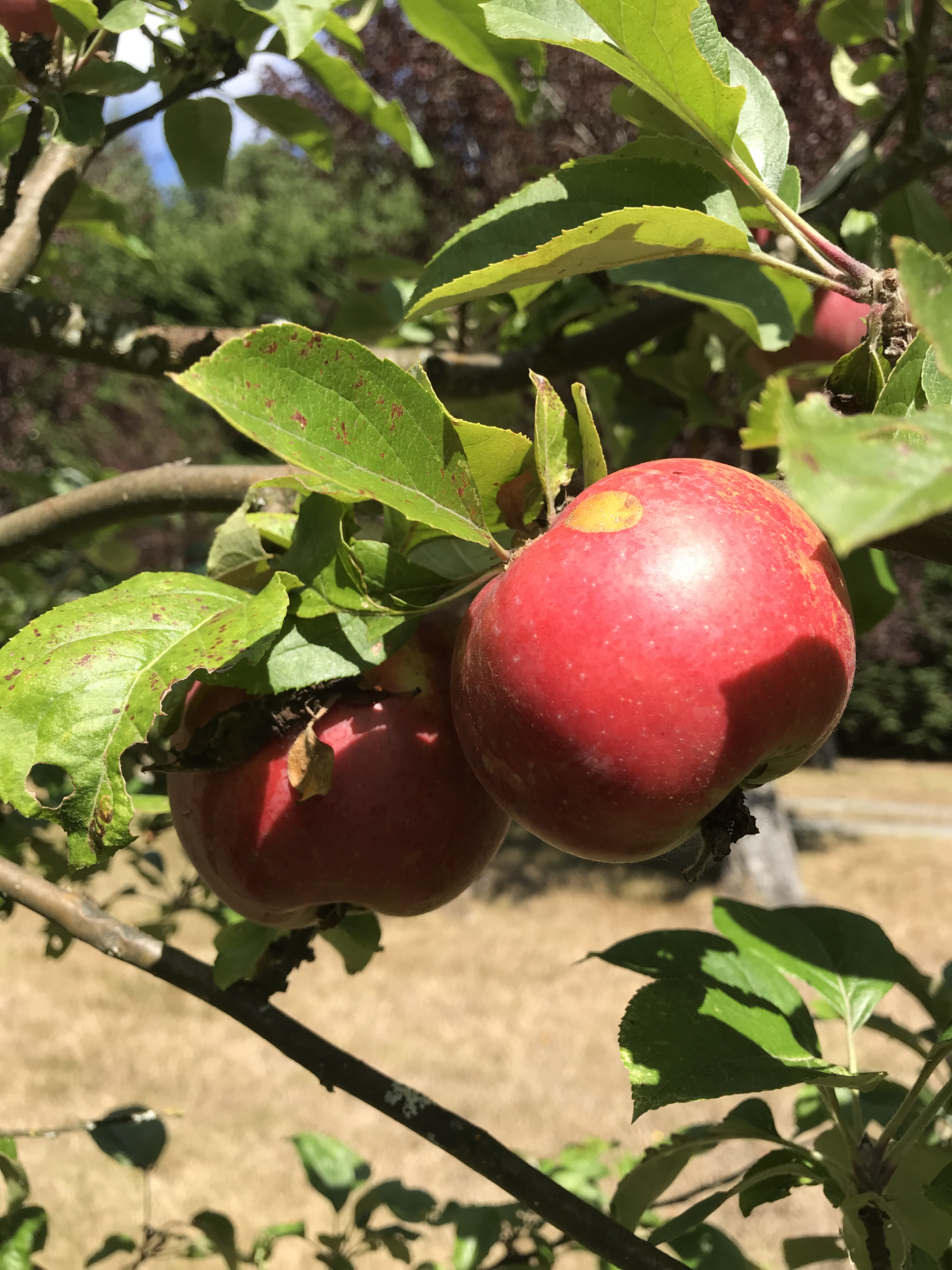
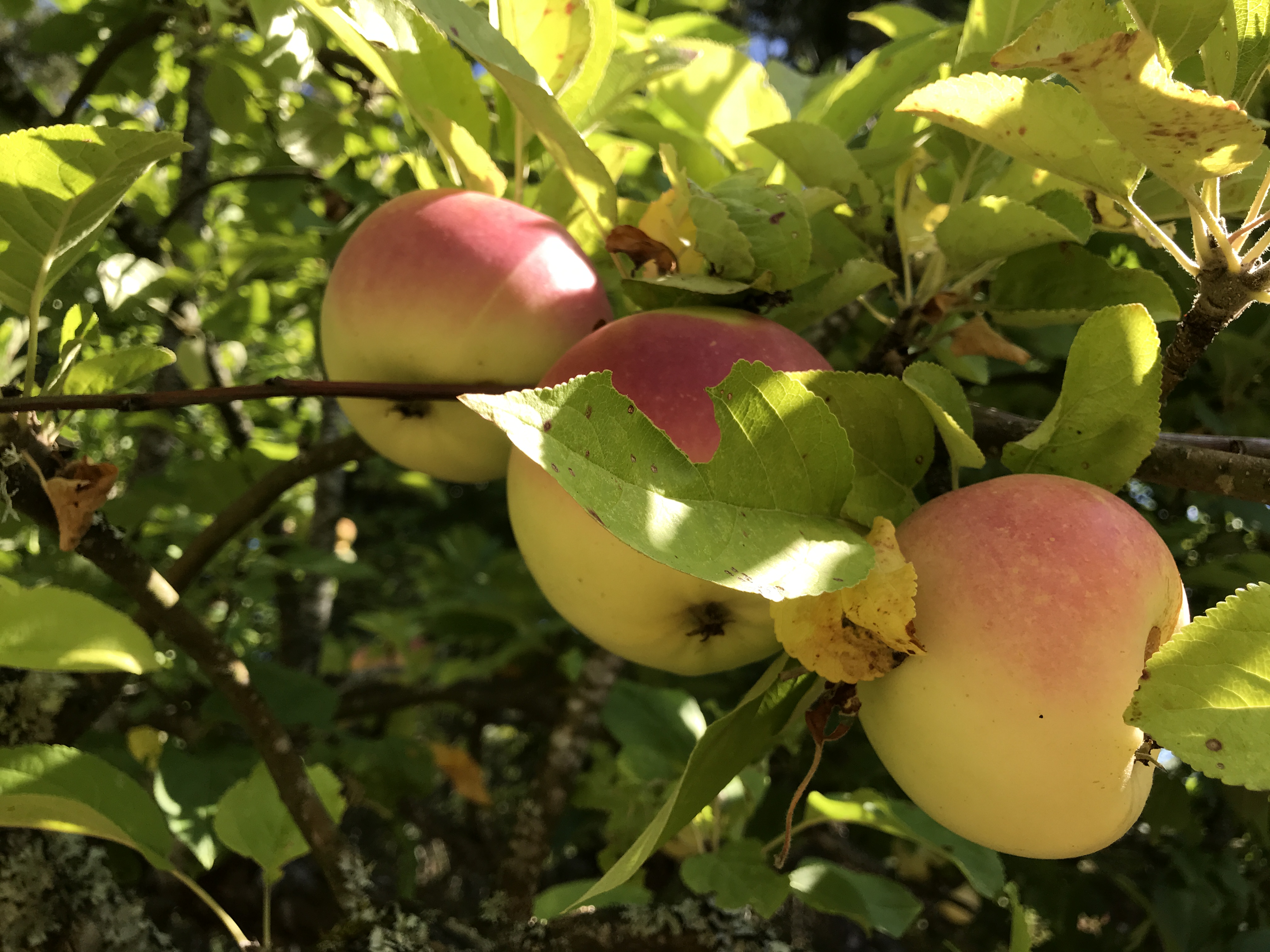 McKay had started with the buds, pointing out their difference, which I could not discern.
McKay had started with the buds, pointing out their difference, which I could not discern.  David and I are killing this year’s harvest. Four or five full apple boxes are at the base of Number 8, the only tree we sort of know the varietal name for, due to its rusty, russet skin. Because we’re professionals, we don’t pretend to know the true varietal names of any of our ten trees but we are carefully recording their appearance, taste and botanical behaviour like the untrained scientists that we are.
David and I are killing this year’s harvest. Four or five full apple boxes are at the base of Number 8, the only tree we sort of know the varietal name for, due to its rusty, russet skin. Because we’re professionals, we don’t pretend to know the true varietal names of any of our ten trees but we are carefully recording their appearance, taste and botanical behaviour like the untrained scientists that we are.  Many hours later, we left with 5L boxes full of hot pasteurized juice packaged into vacuumed plastic bags. Just like boxed wine, this juice comes out of a tap and is shelf-stable for 6 months without refrigeration.
Many hours later, we left with 5L boxes full of hot pasteurized juice packaged into vacuumed plastic bags. Just like boxed wine, this juice comes out of a tap and is shelf-stable for 6 months without refrigeration. 
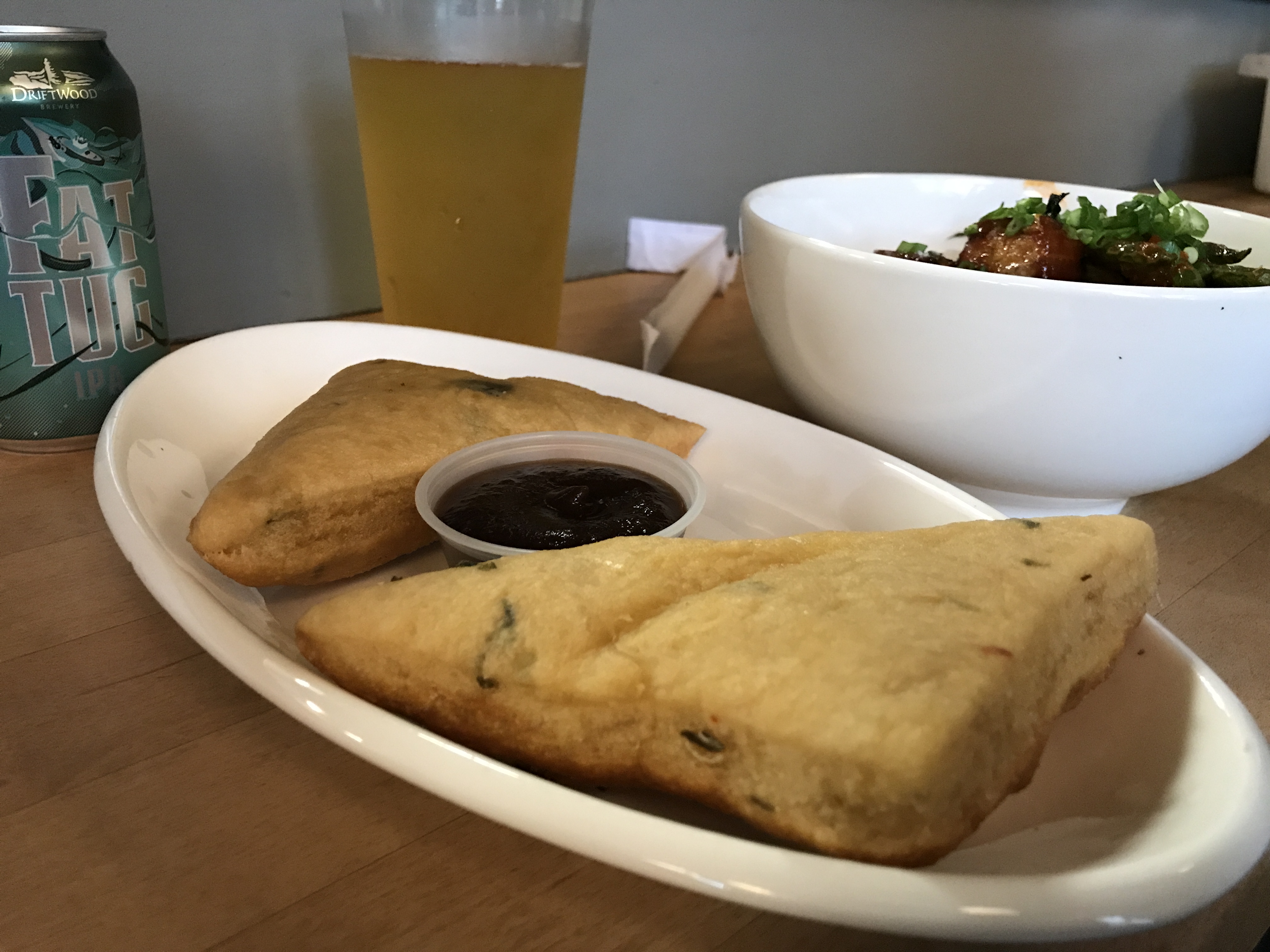
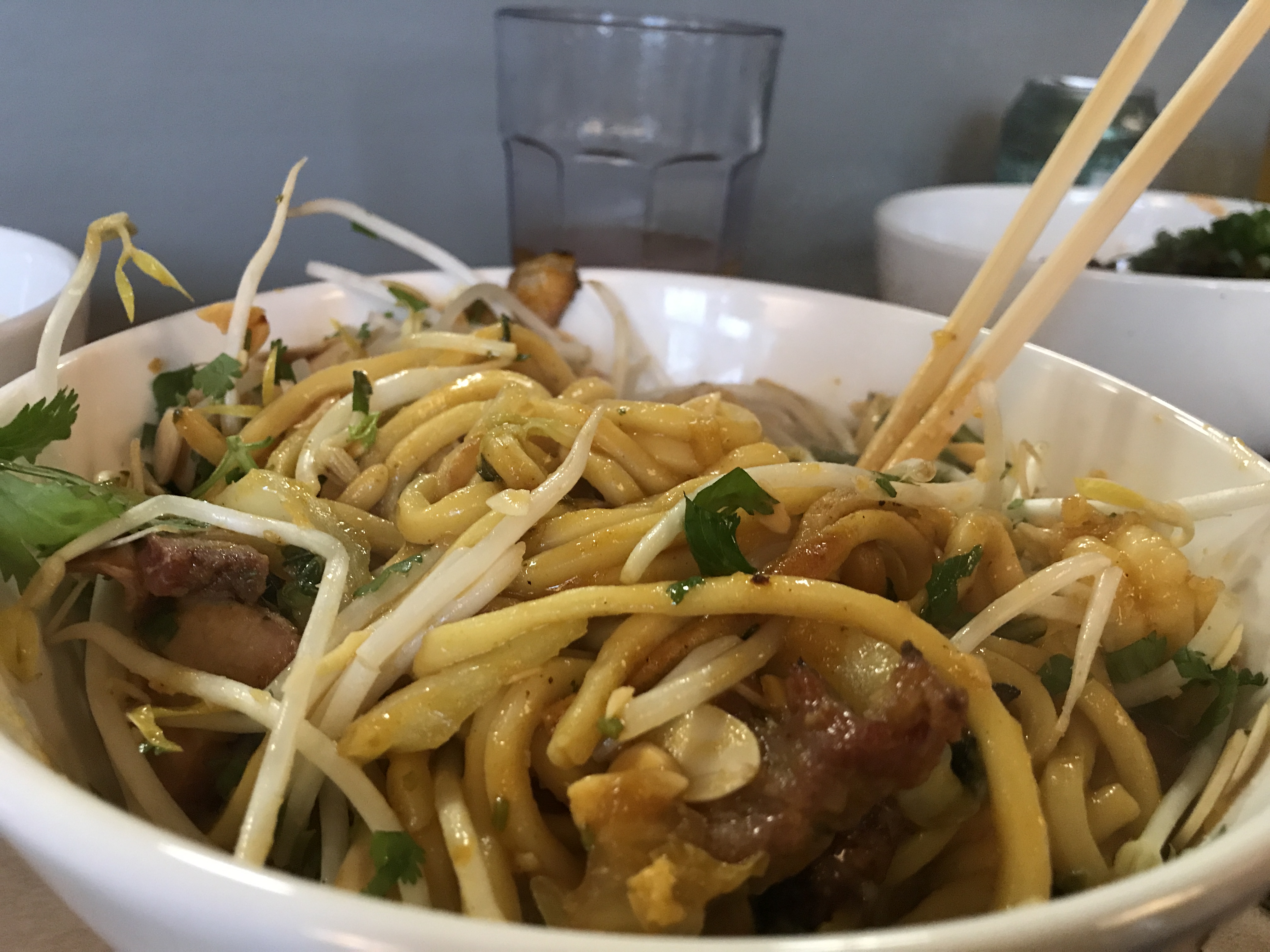








 Sarah really understands flavours and how to pair them. A former rose horticulturist with the Brooklyn Botanic Garden, this woman knows and loves blossoms, buds, roots, seeds and fruits. She bakes like a true artist and luckily for us, she’s written down all of her highly novel, well-tested creations. Who would have thought to make popovers with spring chives and dandelions? Or pair cocoa-spiced pork with rhubarb in a pot pie?
Sarah really understands flavours and how to pair them. A former rose horticulturist with the Brooklyn Botanic Garden, this woman knows and loves blossoms, buds, roots, seeds and fruits. She bakes like a true artist and luckily for us, she’s written down all of her highly novel, well-tested creations. Who would have thought to make popovers with spring chives and dandelions? Or pair cocoa-spiced pork with rhubarb in a pot pie?
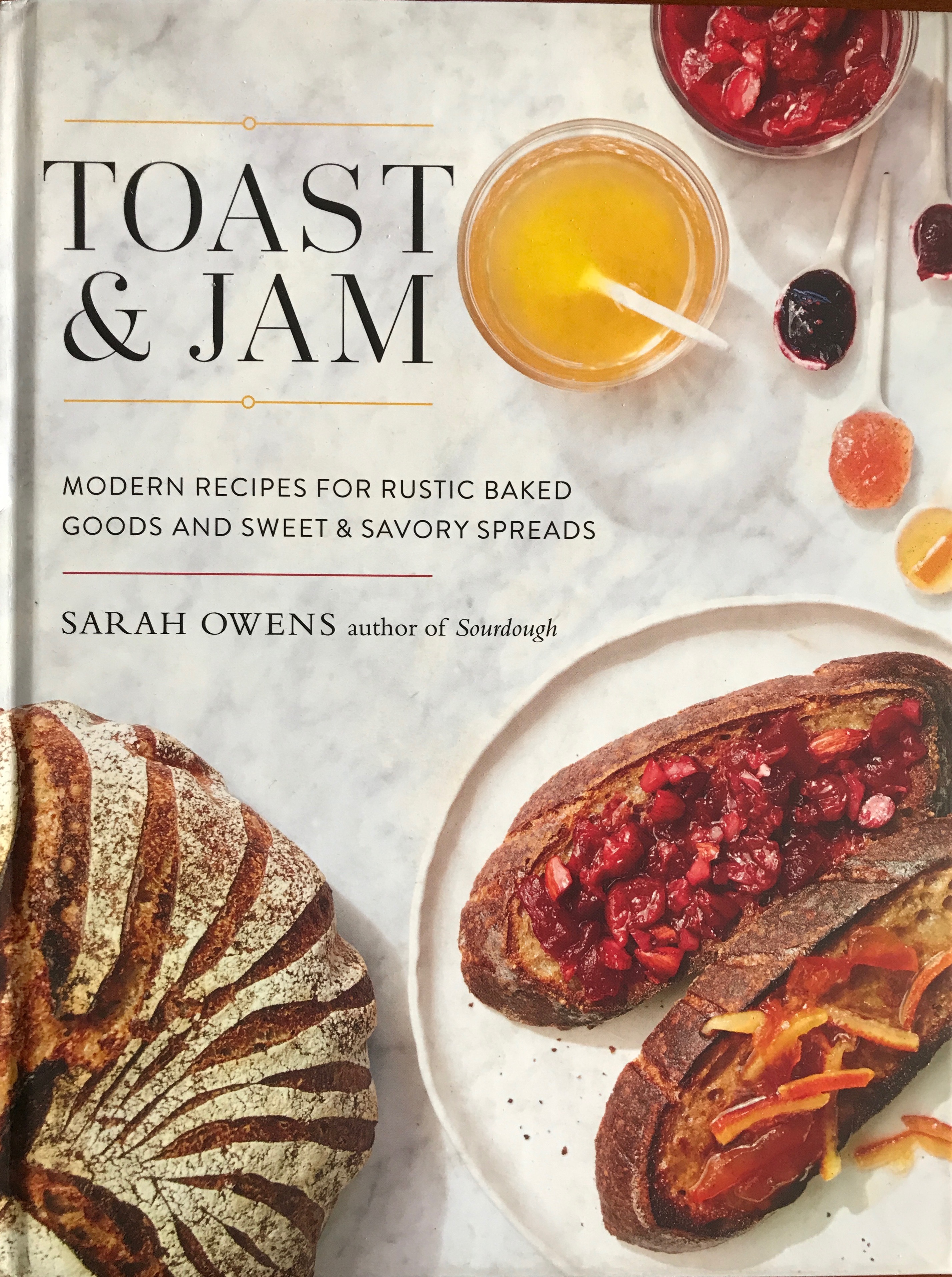








 Full disclosure: I have a thing for amaretti. They are classic among Italian sweets and like most classic things, vary wildly from cook to cook, region to region. I’d made it my calling to sample them all, be it fresh from a bakery or ripped out of a supermarket package. Yet all the recipes I’d baked were abysmal. I was resigned to never finding my dream amaretti recipe until that fateful day in Rocca’s kitchen.
Full disclosure: I have a thing for amaretti. They are classic among Italian sweets and like most classic things, vary wildly from cook to cook, region to region. I’d made it my calling to sample them all, be it fresh from a bakery or ripped out of a supermarket package. Yet all the recipes I’d baked were abysmal. I was resigned to never finding my dream amaretti recipe until that fateful day in Rocca’s kitchen. Rocca delivered it the next day in a text, taking a photo of Lucy’s typewritten recipe. It was short and sweet. Only five lines of ingredients and a very brief sentence of instruction below. The title read “Almond Cookies.”
Rocca delivered it the next day in a text, taking a photo of Lucy’s typewritten recipe. It was short and sweet. Only five lines of ingredients and a very brief sentence of instruction below. The title read “Almond Cookies.” “Oh, throw in a teaspoon of baking powder,” said Rocca flippantly. Were these Puglian sisters in collusion?! What other ingredients were somehow missing in this recipe meant for mangiacake me?
“Oh, throw in a teaspoon of baking powder,” said Rocca flippantly. Were these Puglian sisters in collusion?! What other ingredients were somehow missing in this recipe meant for mangiacake me?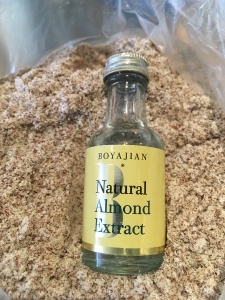 “Be careful,” said Rocca, relieving my paranoia slightly. “The almond flour is not cheap. I was so shocked the first time I bought it: Fourteen dollars! And don’t buy blanched flour. Whole almond flour tastes best.”
“Be careful,” said Rocca, relieving my paranoia slightly. “The almond flour is not cheap. I was so shocked the first time I bought it: Fourteen dollars! And don’t buy blanched flour. Whole almond flour tastes best.” As to the cocoa powder, the taste is negligible. The cookie batter is dark but bakes out into a light brown cookie. This single teaspoon seems to counter that entire bottle of extract.
As to the cocoa powder, the taste is negligible. The cookie batter is dark but bakes out into a light brown cookie. This single teaspoon seems to counter that entire bottle of extract.
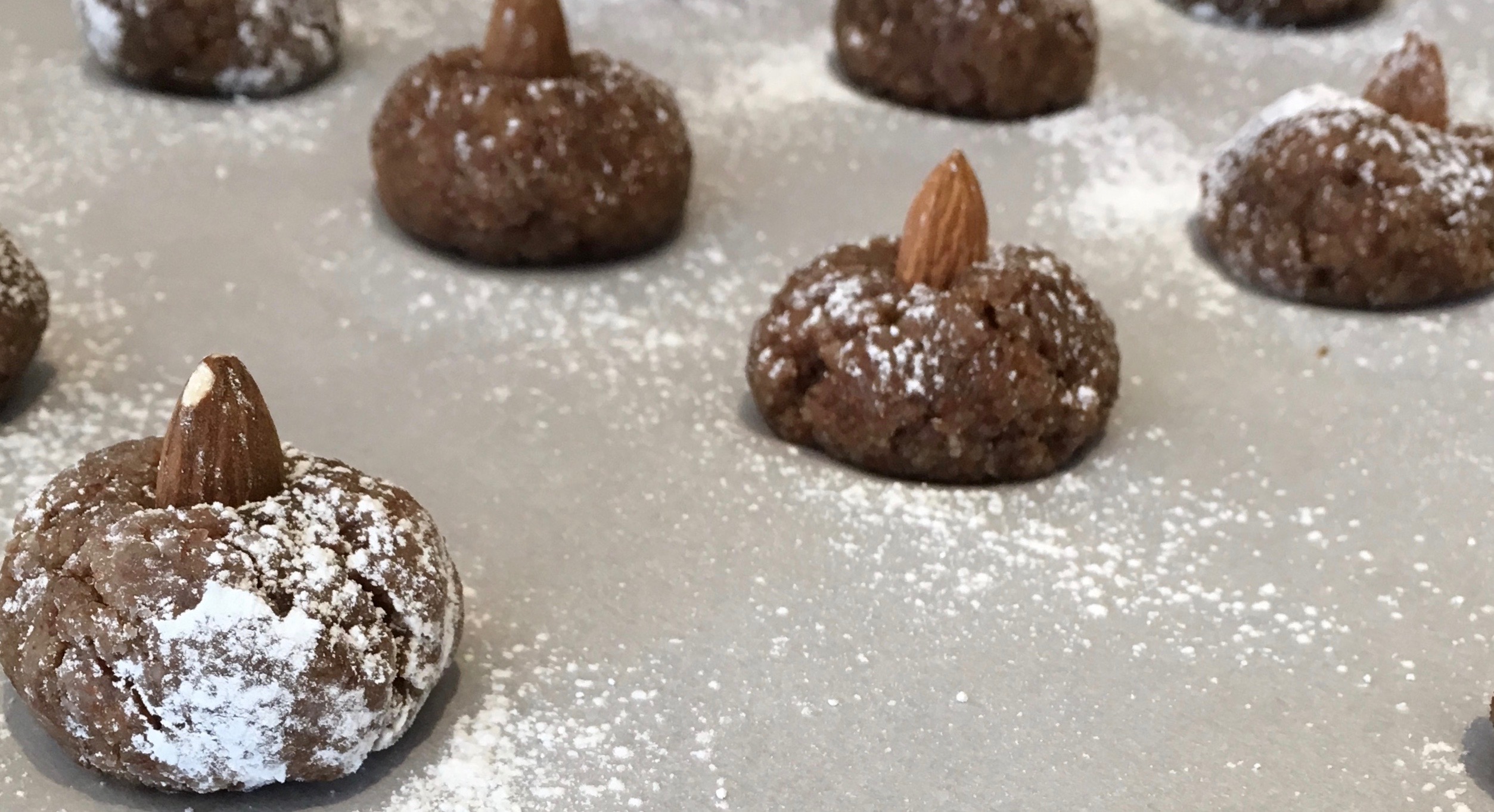



 Truth be told, my problem was the eggs. I really didn’t like them plain. If I’d practiced with a bowlful of very frothy, very beaten eggs, and had let them slide into a buttery, perfectly heated cast iron pan, they might have had a chance. They just needed time and singularity, so their eggy selves could focus on setting rather than accommodating all those interlopers.
Truth be told, my problem was the eggs. I really didn’t like them plain. If I’d practiced with a bowlful of very frothy, very beaten eggs, and had let them slide into a buttery, perfectly heated cast iron pan, they might have had a chance. They just needed time and singularity, so their eggy selves could focus on setting rather than accommodating all those interlopers.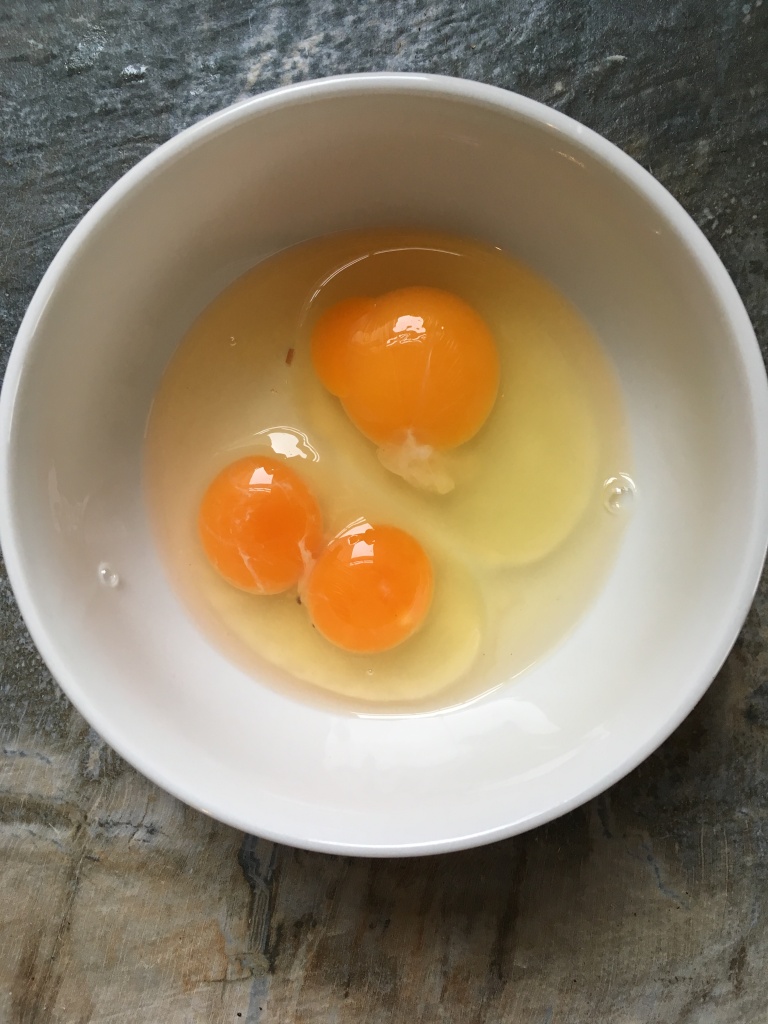 So I moved over to poaching. Again, I was saved by a gizmo. This time it was my grandmother Nonnie’s poaching pan, a lovely deep, copper bottom saucepan fitted with a rack in which four egg saucers nestle inside. One fills the pan with water, covers with the egg rack and follows with a lid. Once the water comes to a boil, the hot little saucers are ready to be buttered and loaded with a freshly cracked egg.
So I moved over to poaching. Again, I was saved by a gizmo. This time it was my grandmother Nonnie’s poaching pan, a lovely deep, copper bottom saucepan fitted with a rack in which four egg saucers nestle inside. One fills the pan with water, covers with the egg rack and follows with a lid. Once the water comes to a boil, the hot little saucers are ready to be buttered and loaded with a freshly cracked egg.

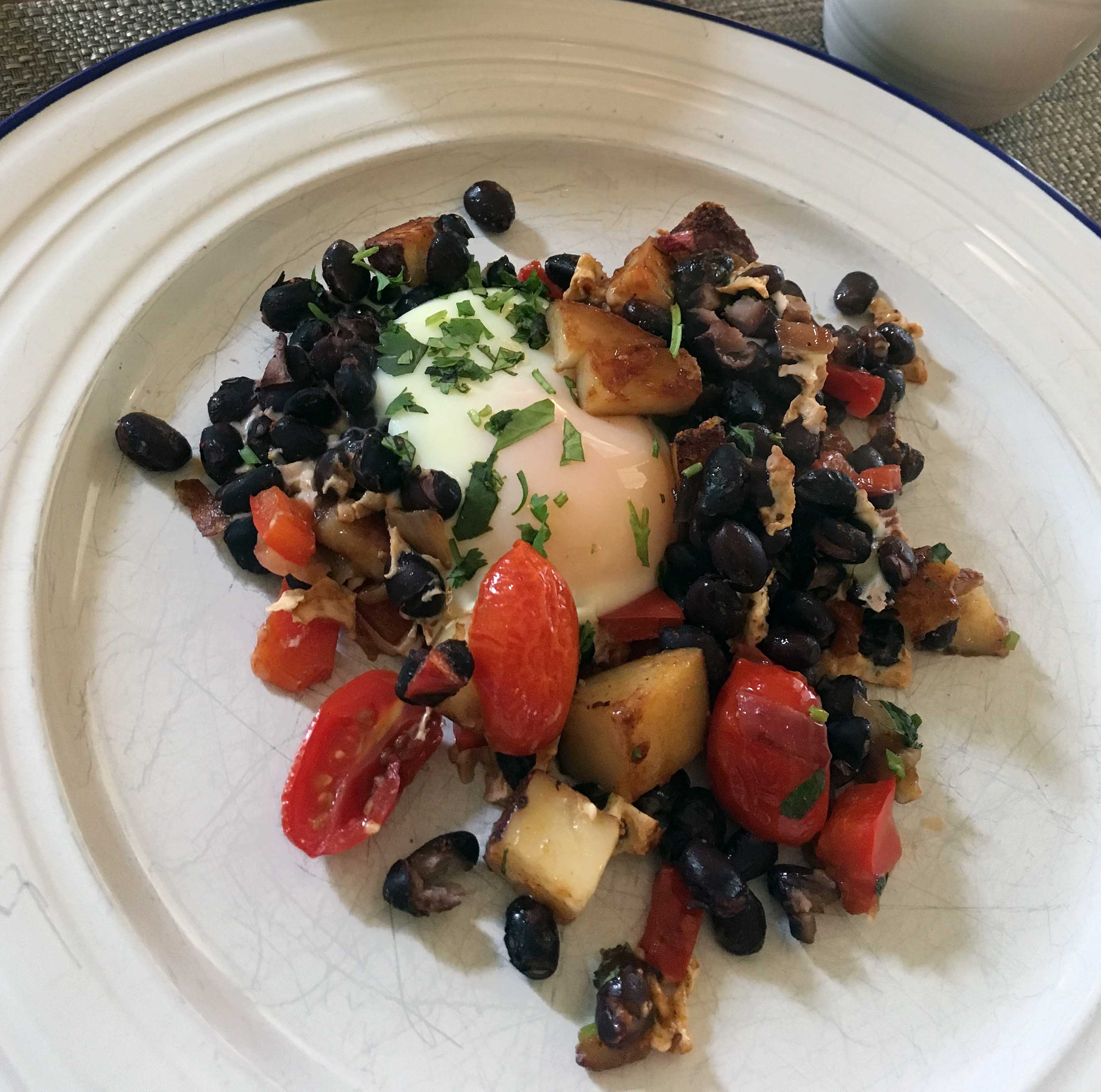

 for this because it contains lamb-loving turmeric and other warm spices like cinnamon and cloves. This is a curry that must include potatoes and I was happy to toss in three different organic varieties, starring a dark, red-skinned beauty with deep purple flesh. Lots of green herbs should swim through every Thai curry. I always keep a stash of lime leaves in my freezer and wished I had fresh Thai basil to toss in, too. I improvised with half a frozen cube of homemade basil pesto and was happy with the results.
for this because it contains lamb-loving turmeric and other warm spices like cinnamon and cloves. This is a curry that must include potatoes and I was happy to toss in three different organic varieties, starring a dark, red-skinned beauty with deep purple flesh. Lots of green herbs should swim through every Thai curry. I always keep a stash of lime leaves in my freezer and wished I had fresh Thai basil to toss in, too. I improvised with half a frozen cube of homemade basil pesto and was happy with the results. layer of parchment paper tucked over the curry before it is lidded. The parchment paper layer prevents any drop of fragrant moisture from leaving this slow-cooked beauty. Just before serving, I brighten these heavy flavours with tamarind paste, fresh mint and coriander. Cooking time varies depending on the cut of lamb and whether it contains bones or not. Don’t stop braising until the meat is fork tender. Enjoy!
layer of parchment paper tucked over the curry before it is lidded. The parchment paper layer prevents any drop of fragrant moisture from leaving this slow-cooked beauty. Just before serving, I brighten these heavy flavours with tamarind paste, fresh mint and coriander. Cooking time varies depending on the cut of lamb and whether it contains bones or not. Don’t stop braising until the meat is fork tender. Enjoy!

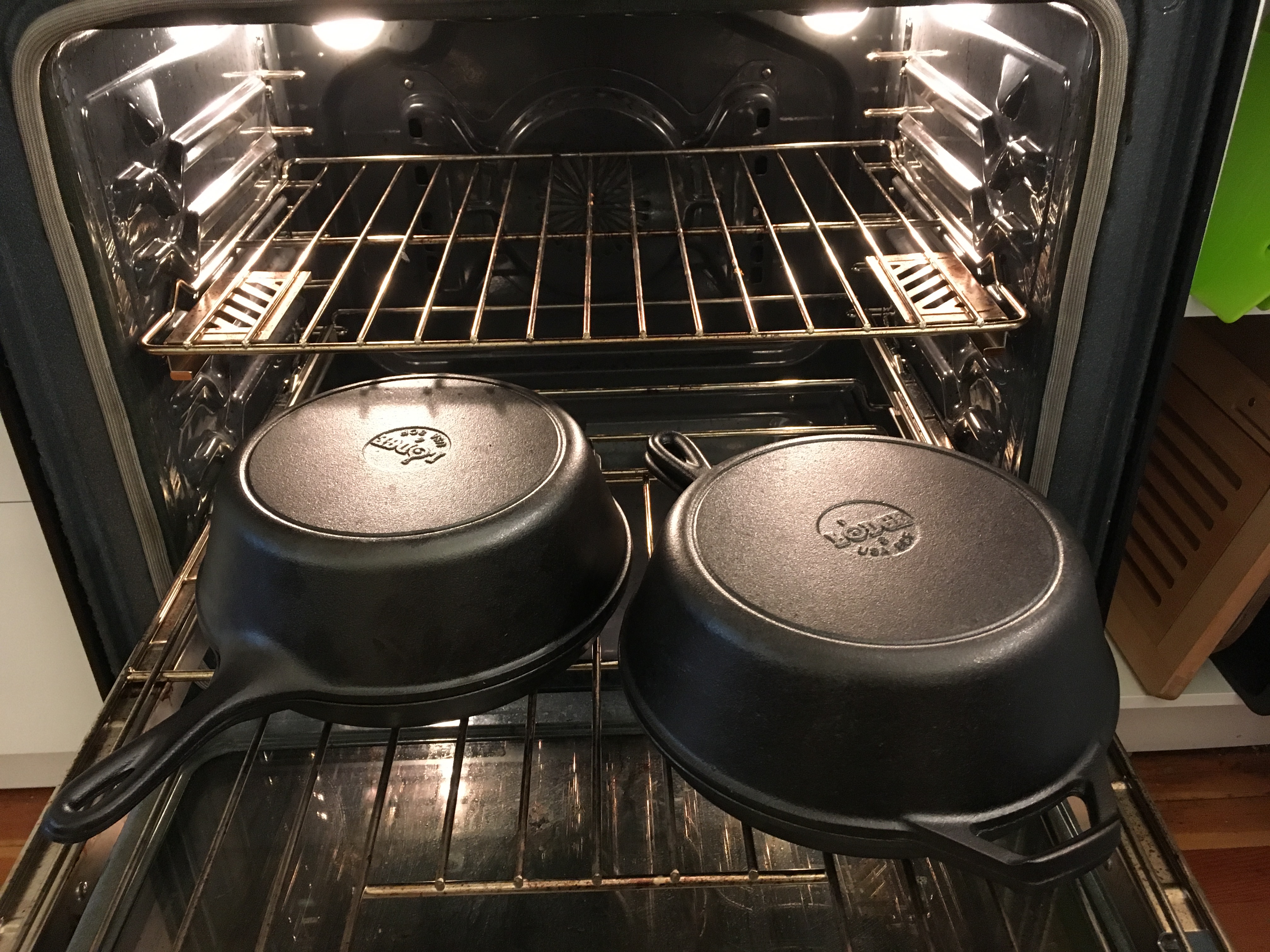 Dutch ovens or Lodge Pan combo cookers: When Jim Lahey of Sullivan St Bakery published his
Dutch ovens or Lodge Pan combo cookers: When Jim Lahey of Sullivan St Bakery published his  Bannetons and baker’s linen: Artisanal bread dough is risen in baskets to preserve the shape and to create a pretty swirling flour pattern on the finished crust. You plunk the shaped loaf in bottom-side-up, let it rise, then place a parchment-paper-lined paddle or rimless baking sheet over it and flip the loaf back over, right side up. I dust my bannetons liberally with rice flour which prevents sticking and also creates nice, white contrasting lines on the finished crust. I never wash my bannetons, because moisture encourages mildew. I use a natural bristle brush to clean the bannetons and store them in a dry, airy cupboard. Round bannetons should be no wider than eight to nine inches in diameter or your loaf will be too big for the combo cooker. Another option is baker’s linen liners that can be fit over medium sized bowls.
Bannetons and baker’s linen: Artisanal bread dough is risen in baskets to preserve the shape and to create a pretty swirling flour pattern on the finished crust. You plunk the shaped loaf in bottom-side-up, let it rise, then place a parchment-paper-lined paddle or rimless baking sheet over it and flip the loaf back over, right side up. I dust my bannetons liberally with rice flour which prevents sticking and also creates nice, white contrasting lines on the finished crust. I never wash my bannetons, because moisture encourages mildew. I use a natural bristle brush to clean the bannetons and store them in a dry, airy cupboard. Round bannetons should be no wider than eight to nine inches in diameter or your loaf will be too big for the combo cooker. Another option is baker’s linen liners that can be fit over medium sized bowls. Razor blades and lamés: Just before your risen dough goes into the oven, it is time to score. A score allows hot air to emit during the bake without tearing open the crust. Bakers traditionally scored loaves in distinct patterns but nowadays it has become an art. The angle and depth of a score will affect the final shape of the loaf. I like to hold a slightly curved sharp blade between my thumb and index finger but others like to use a handle for the razor called a lamé. A sharp, serrated knife can do the trick, too.
Razor blades and lamés: Just before your risen dough goes into the oven, it is time to score. A score allows hot air to emit during the bake without tearing open the crust. Bakers traditionally scored loaves in distinct patterns but nowadays it has become an art. The angle and depth of a score will affect the final shape of the loaf. I like to hold a slightly curved sharp blade between my thumb and index finger but others like to use a handle for the razor called a lamé. A sharp, serrated knife can do the trick, too.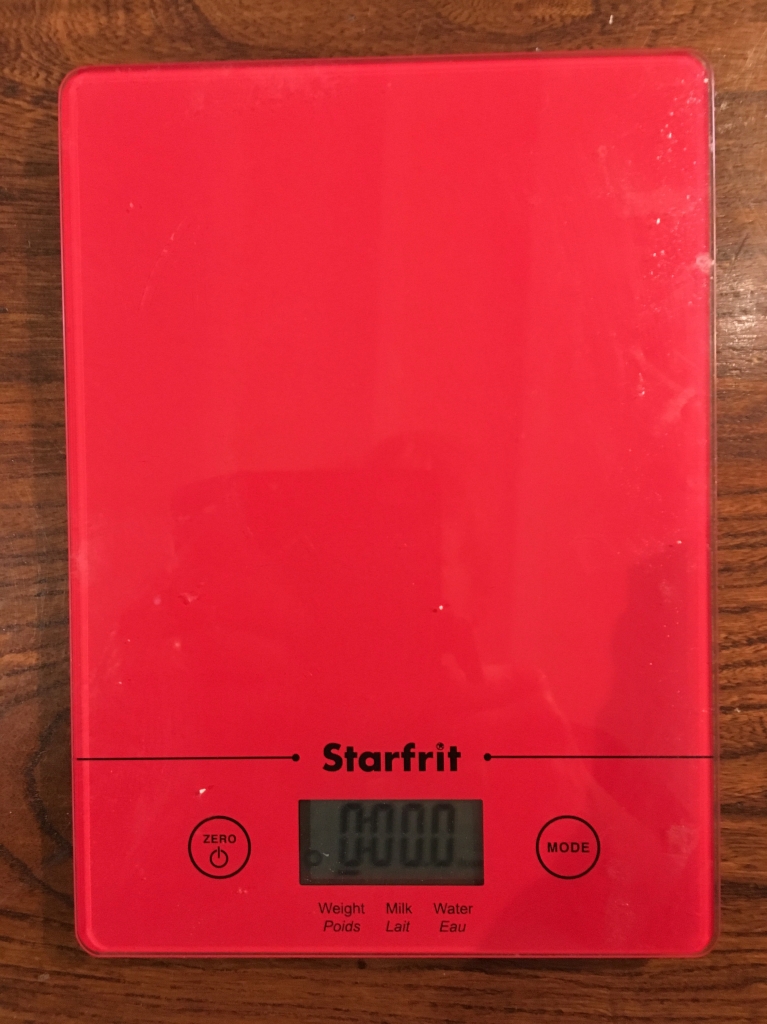 Digital scale: I cannot bake without a scale, I am so used to weighing versus measuring flour, starter and water. You need a scale that can “tare” back to zero so that you can put an empty bowl on the scale, tare to zero, add a pound of flour and tare back to zero, add 8 ounces of water and tare back to zero and so on. Zyliss makes a light, flat scale about the size of an Ipad.
Digital scale: I cannot bake without a scale, I am so used to weighing versus measuring flour, starter and water. You need a scale that can “tare” back to zero so that you can put an empty bowl on the scale, tare to zero, add a pound of flour and tare back to zero, add 8 ounces of water and tare back to zero and so on. Zyliss makes a light, flat scale about the size of an Ipad. Just three ingredients: Flour, water and salt: Organic flour makes a big difference. I buy unbleached organic hard white flour by the 10 kg bag and am happiest when it is locally milled and has a date stamp to guarantee freshness. Locally grown, freshly milled whole rye, kamut, spelt and red fife all make incredible sourdough bread.
Just three ingredients: Flour, water and salt: Organic flour makes a big difference. I buy unbleached organic hard white flour by the 10 kg bag and am happiest when it is locally milled and has a date stamp to guarantee freshness. Locally grown, freshly milled whole rye, kamut, spelt and red fife all make incredible sourdough bread. Salt. Avoid iodized salt and choose sea salt. I like the big bags of coarse grey French salt from Ile de Noirmoutier that I found at Thrifty’s.
Salt. Avoid iodized salt and choose sea salt. I like the big bags of coarse grey French salt from Ile de Noirmoutier that I found at Thrifty’s.

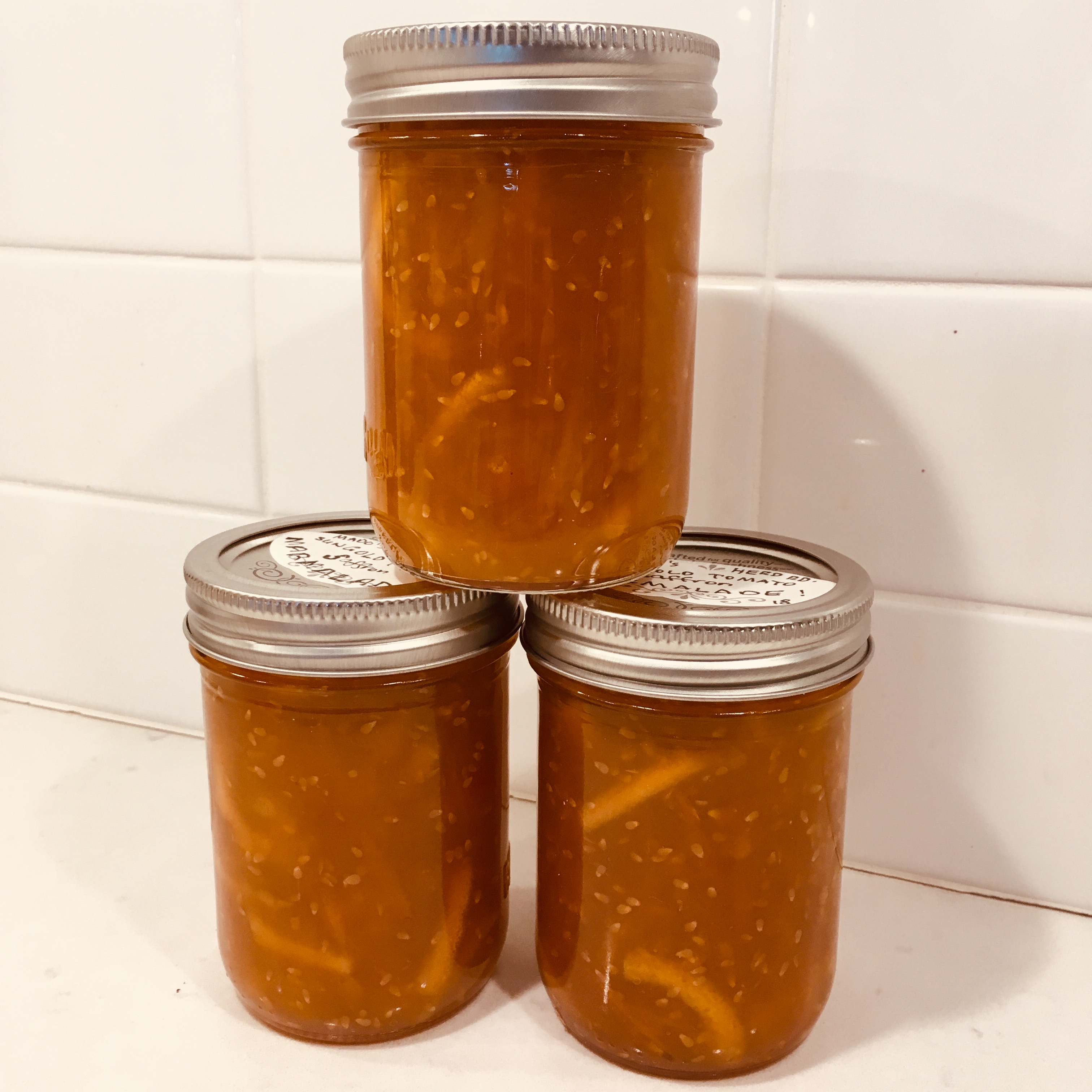 So very British of them, I thought in disdain, but their marmalade reverie was so very infectious, slipping deep into my flavour brain.
So very British of them, I thought in disdain, but their marmalade reverie was so very infectious, slipping deep into my flavour brain.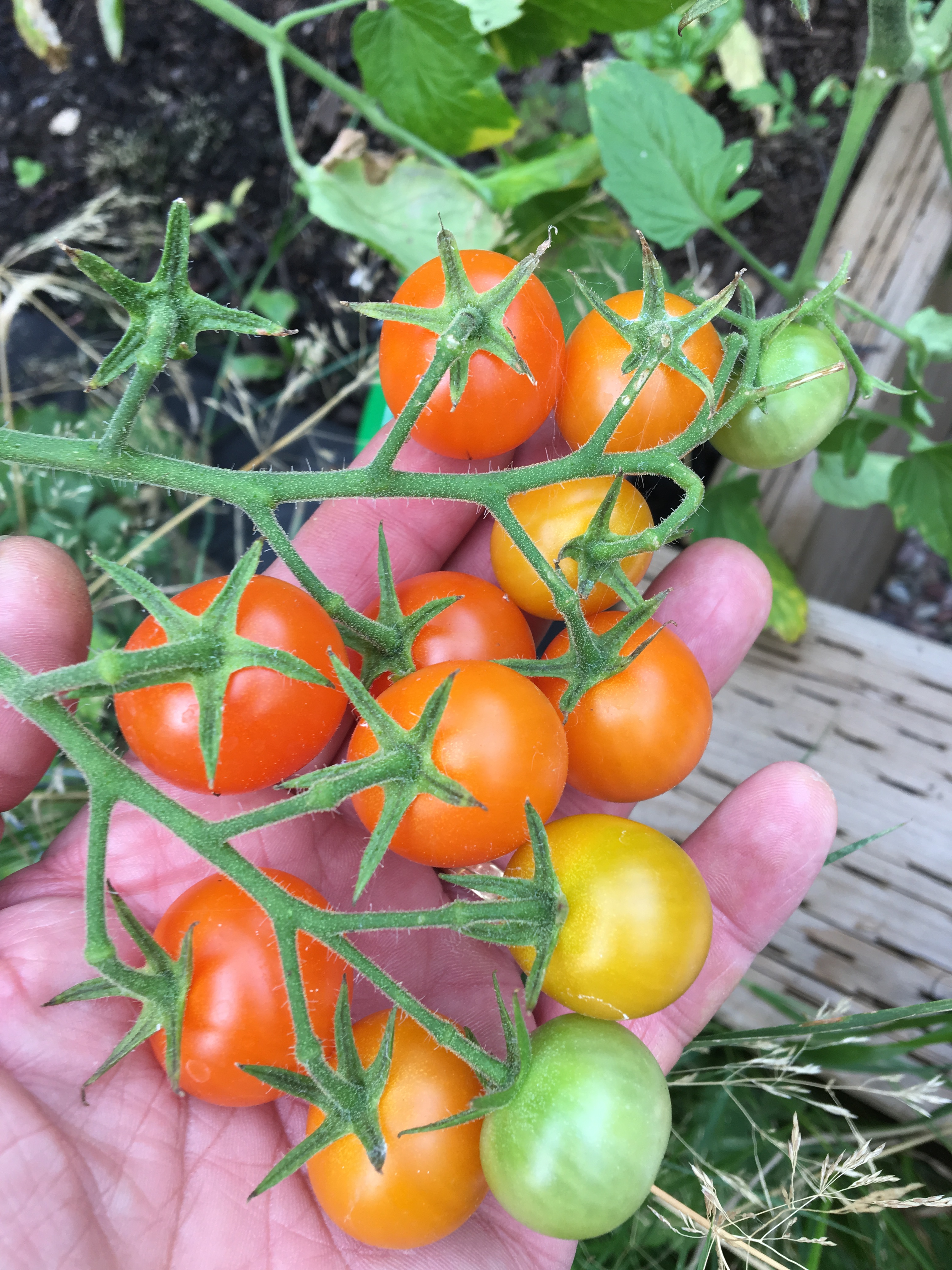 Here they were, half-ripened in my dark, unfinished basement and I could not ignore them. Nor could I forget that bag of organic lemons I’d bought recently…
Here they were, half-ripened in my dark, unfinished basement and I could not ignore them. Nor could I forget that bag of organic lemons I’d bought recently… I had three and a half pounds of SunGolds the size of marbles. They looked so dainty and pretty as they tumbled into the pot alongside cups of sliced lemons. I cranked the gas up high. In just a minute, liquid started to form in the base. After a short, five minutes the mixture was sloshing about. I dumped in the organic sugar and all that fruity sweetness shimmered to a gloss.
I had three and a half pounds of SunGolds the size of marbles. They looked so dainty and pretty as they tumbled into the pot alongside cups of sliced lemons. I cranked the gas up high. In just a minute, liquid started to form in the base. After a short, five minutes the mixture was sloshing about. I dumped in the organic sugar and all that fruity sweetness shimmered to a gloss.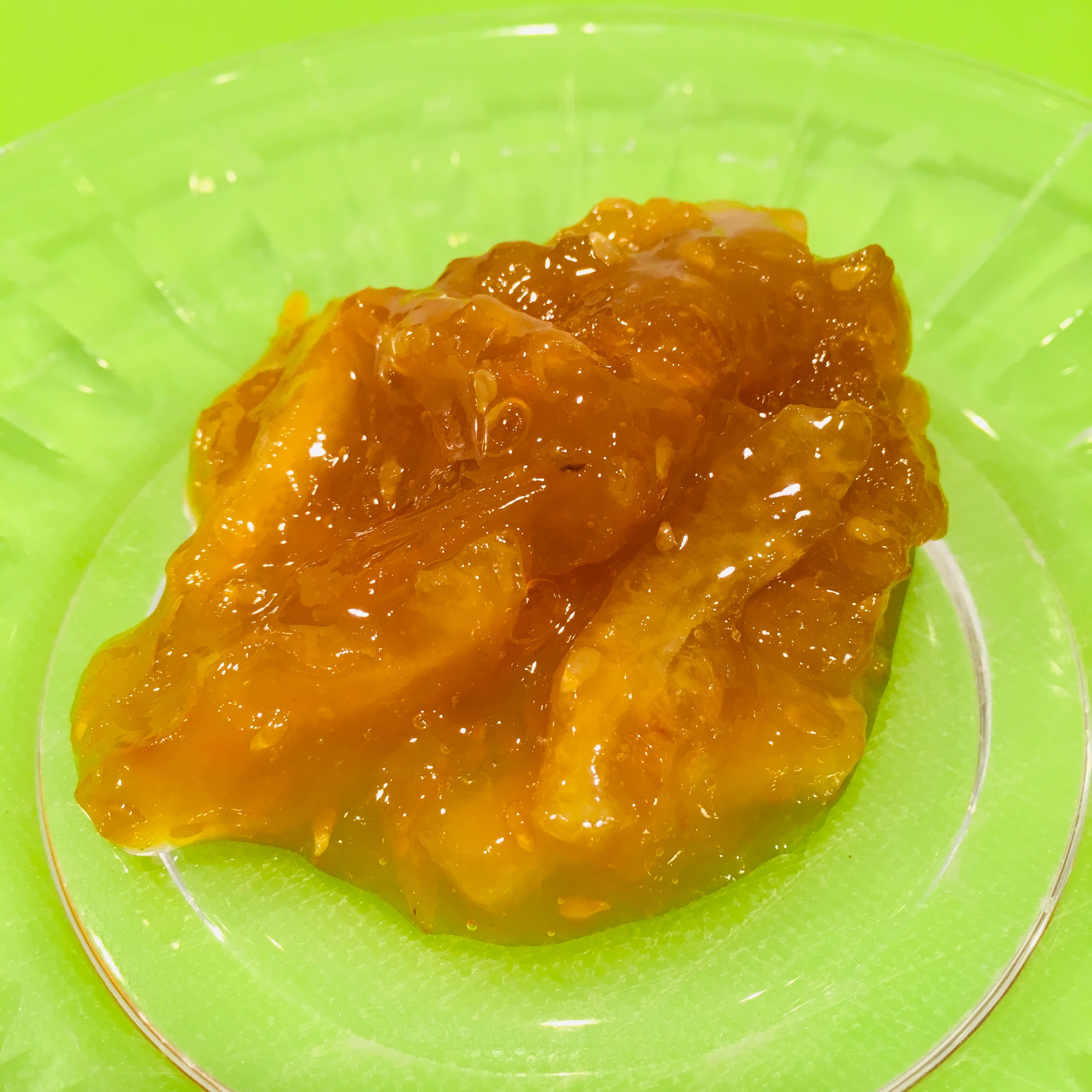 I ventured into this recipe carrying the baggage of a failed gel-maker. After the first ten minutes, I pulled out the Pomona’s Universal Pectin. I even filled a small bowl with sugar, ready to mix with the pectin powder to prevent that nasty clumping and frothing. I started to calculate, figuring this batch would need four teaspoons each of Pomona’s calcium water and pectin.
I ventured into this recipe carrying the baggage of a failed gel-maker. After the first ten minutes, I pulled out the Pomona’s Universal Pectin. I even filled a small bowl with sugar, ready to mix with the pectin powder to prevent that nasty clumping and frothing. I started to calculate, figuring this batch would need four teaspoons each of Pomona’s calcium water and pectin.




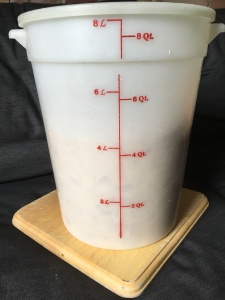
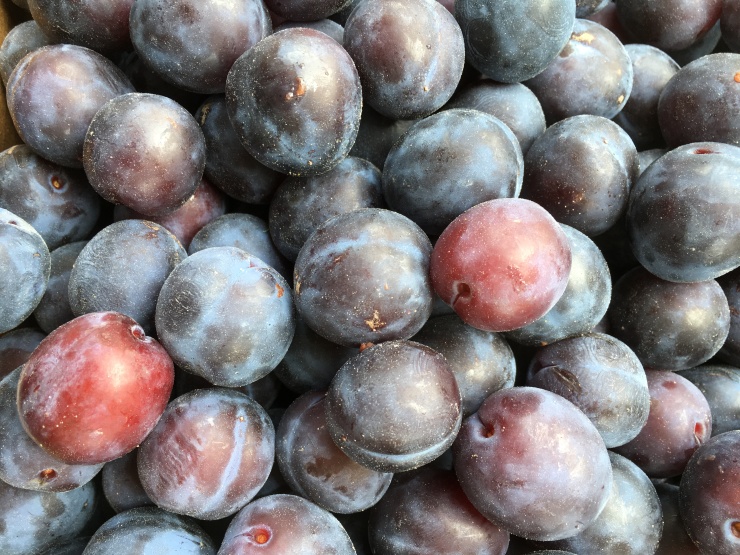
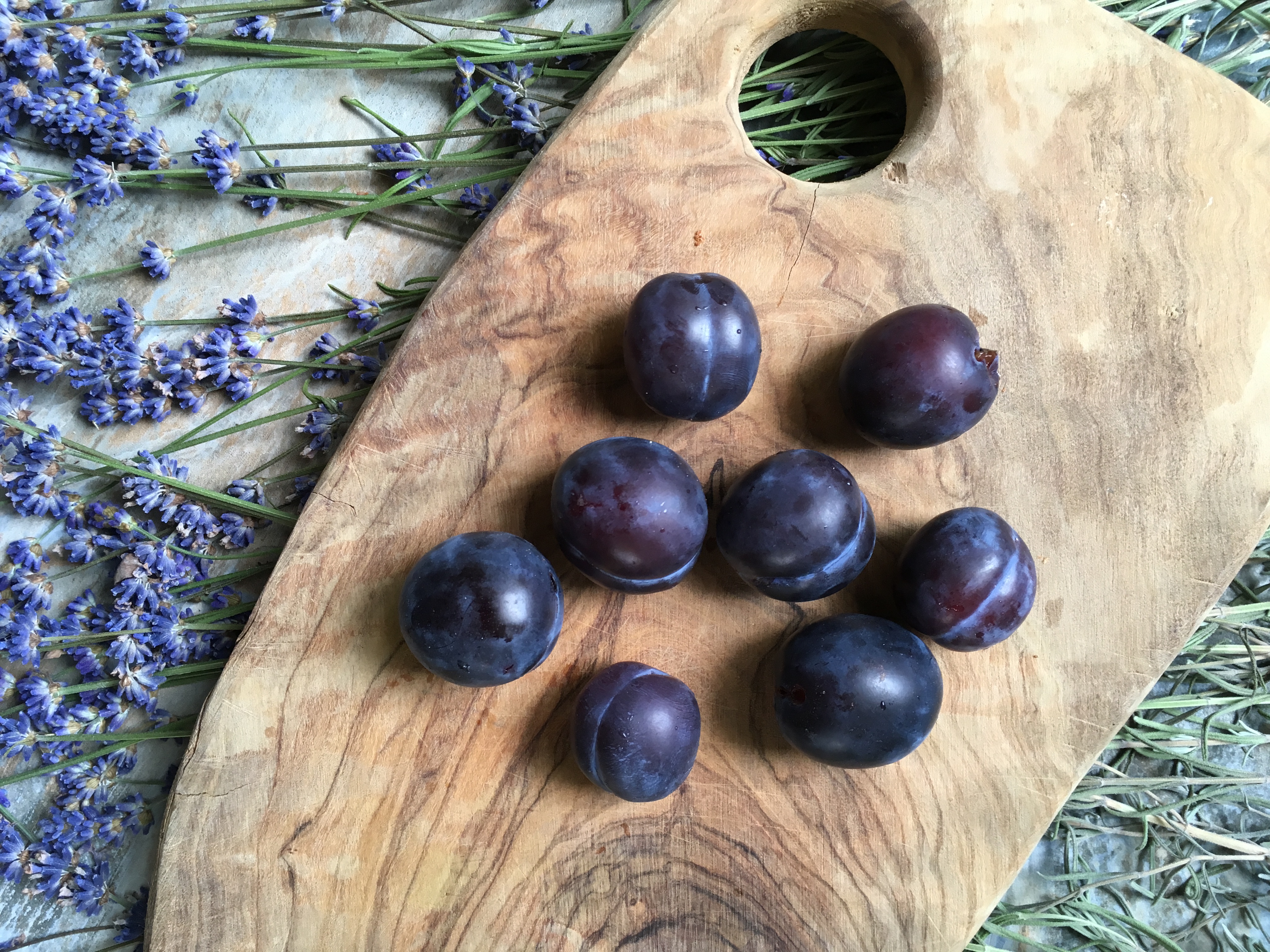 Tony and I were on a first name basis ever since I interviewed him for a newspaper column and he revealed that his Rosedale customers didn’t really care about price (!) All they wanted, he claimed, were tidy piles of the best looking bounty from every corner of the globe.
Tony and I were on a first name basis ever since I interviewed him for a newspaper column and he revealed that his Rosedale customers didn’t really care about price (!) All they wanted, he claimed, were tidy piles of the best looking bounty from every corner of the globe.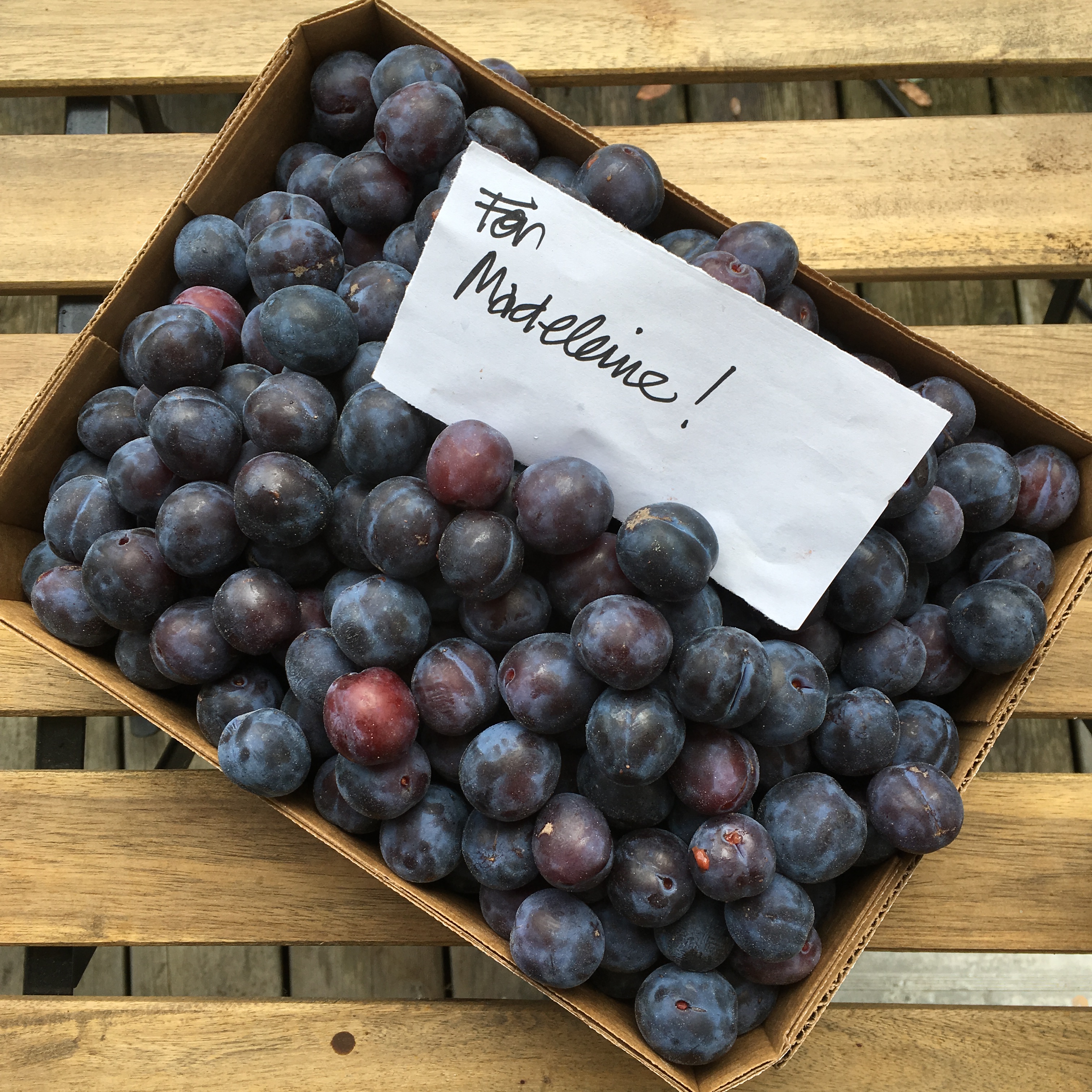 Did I know?
Did I know? 

